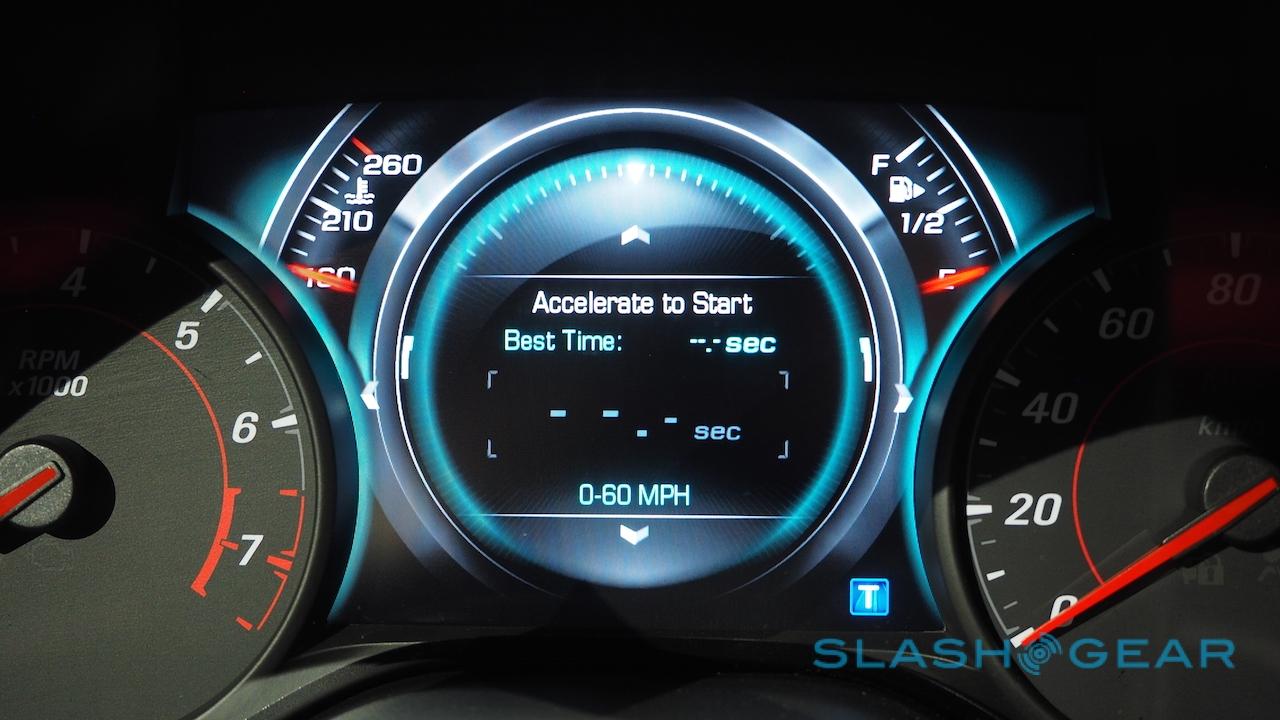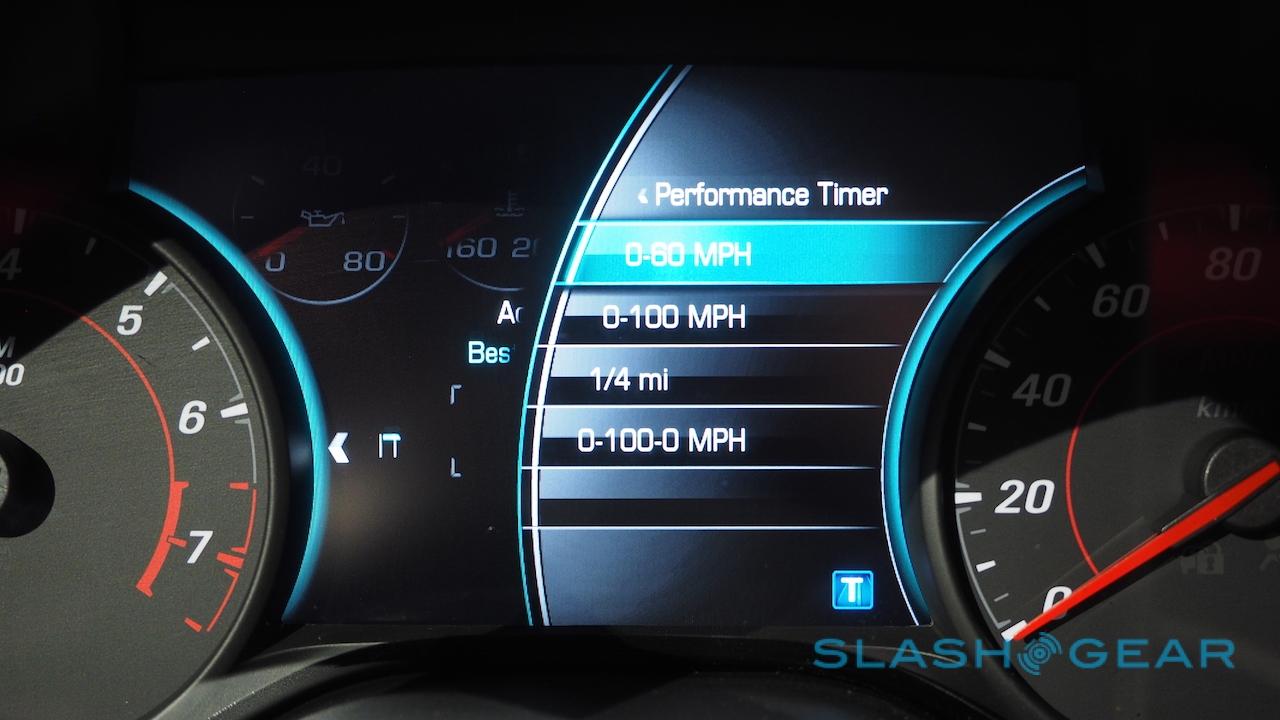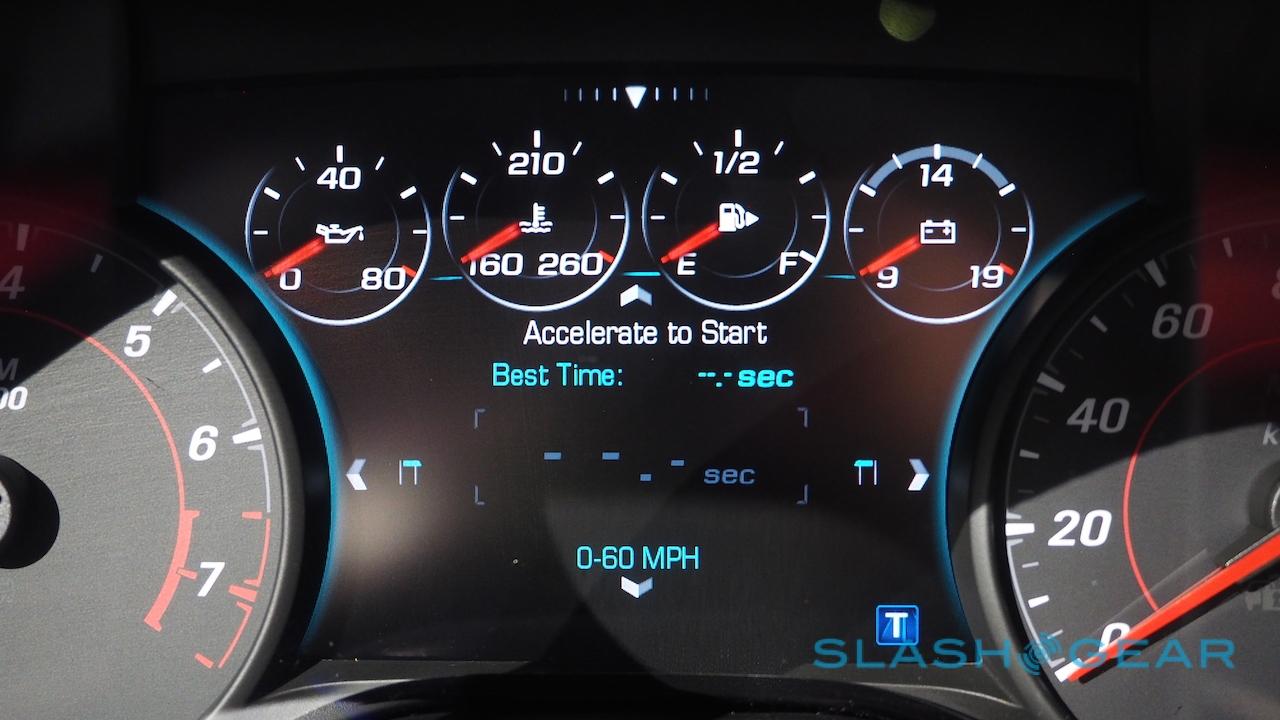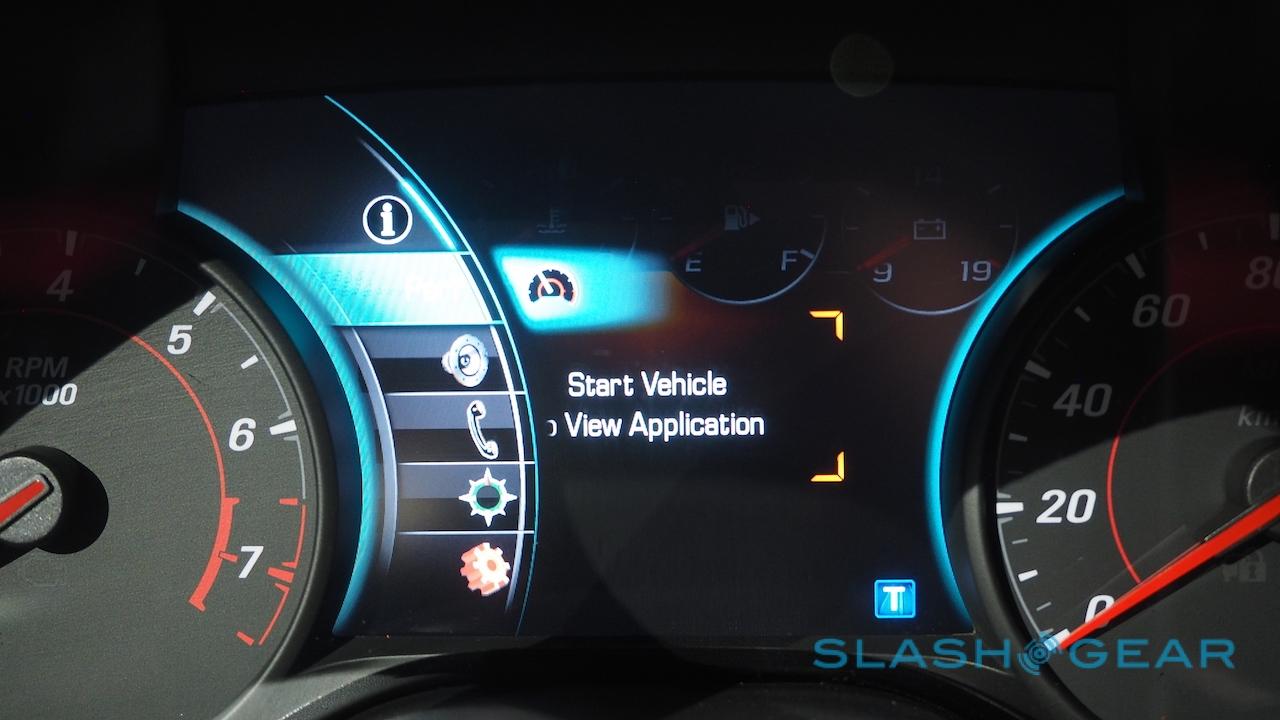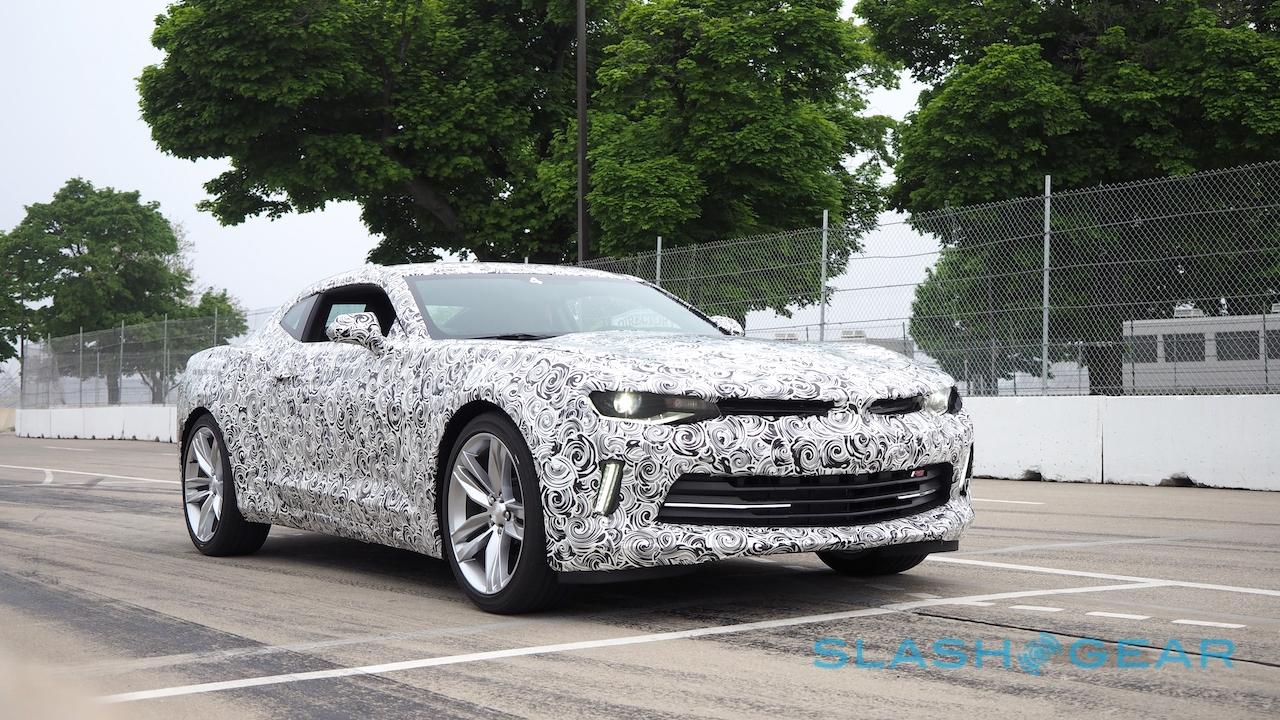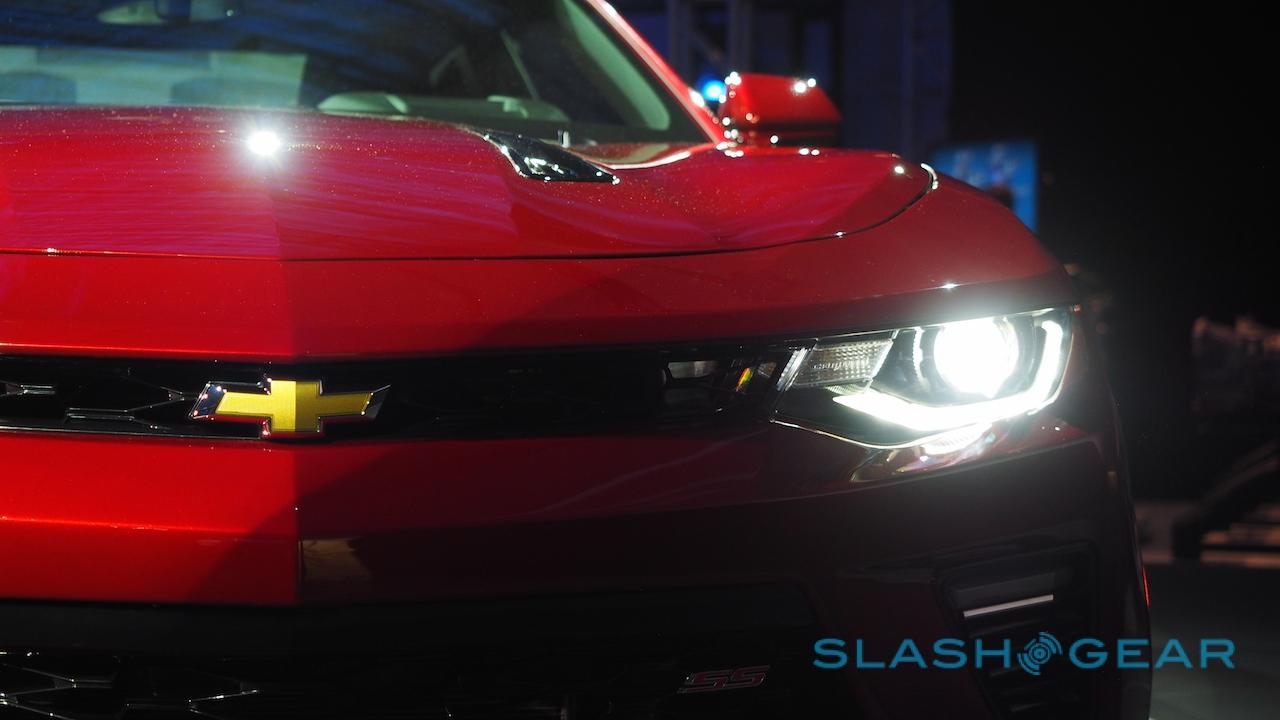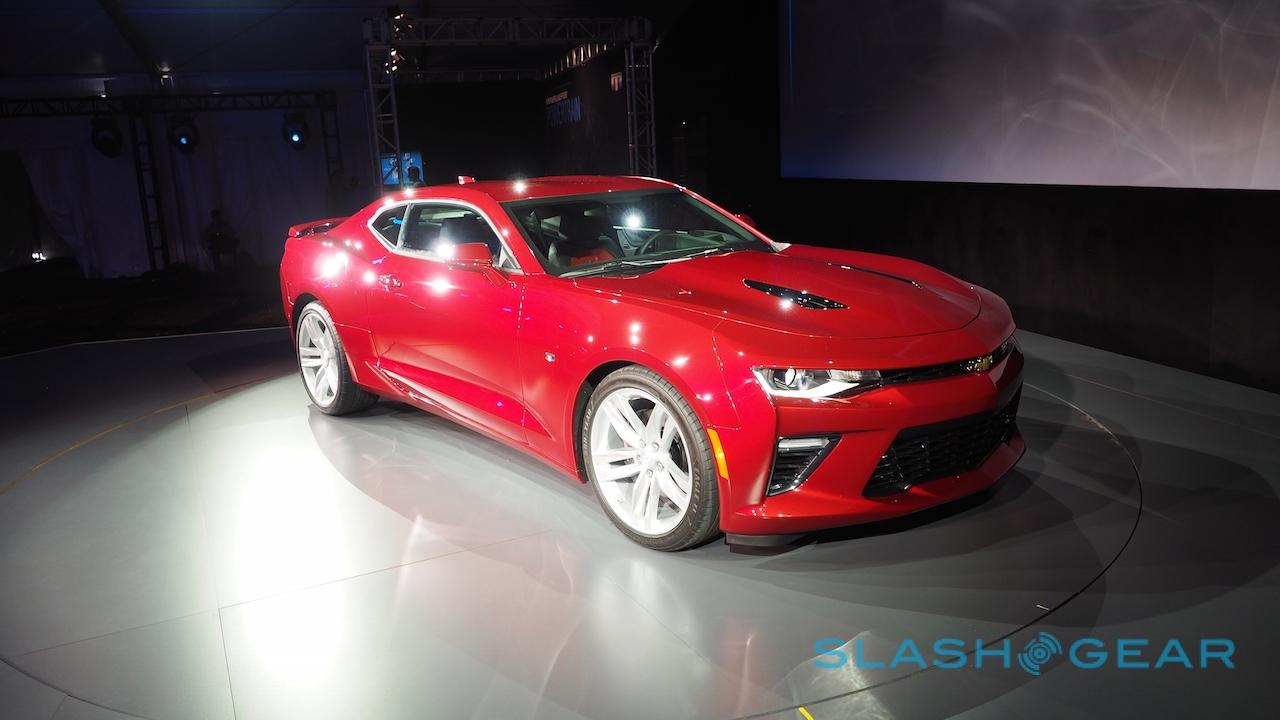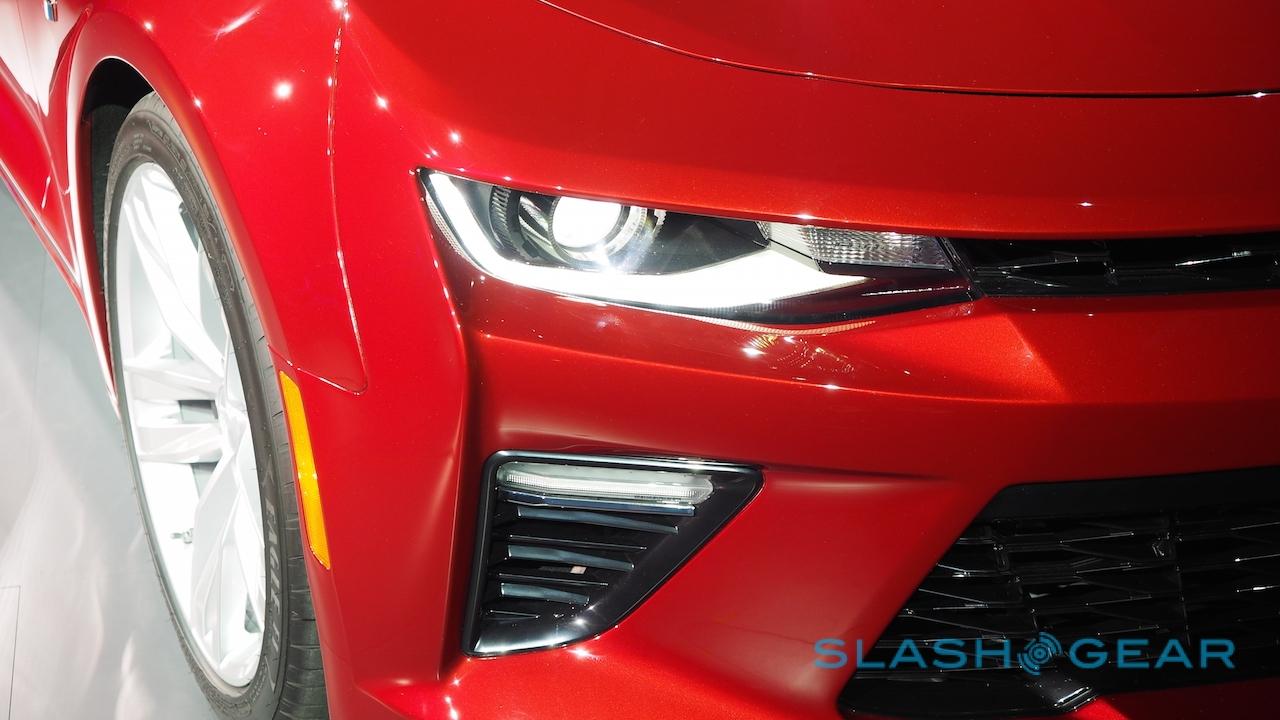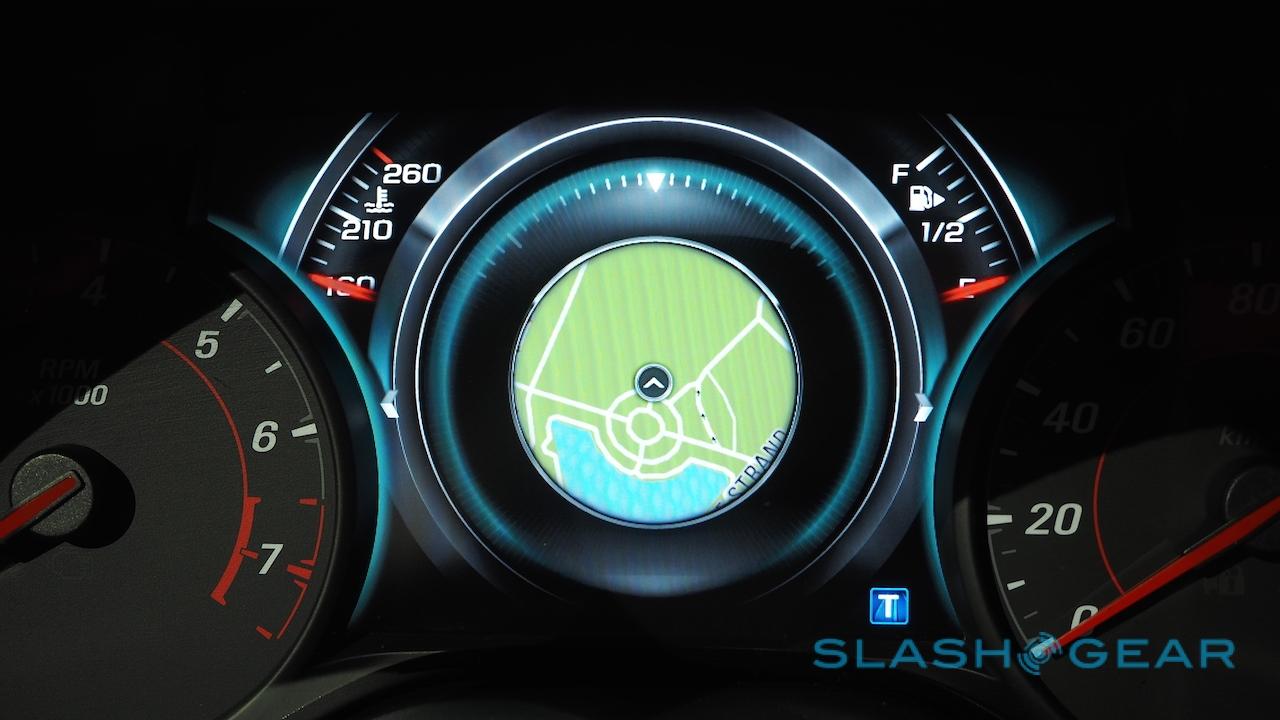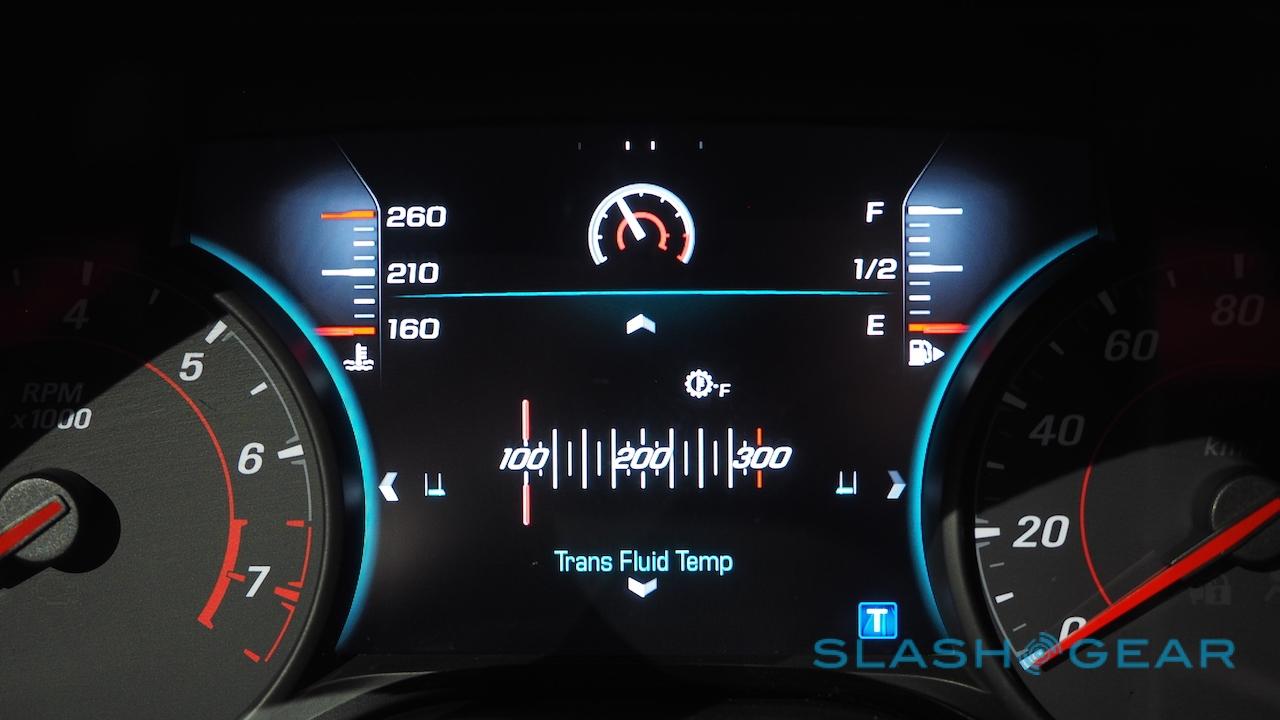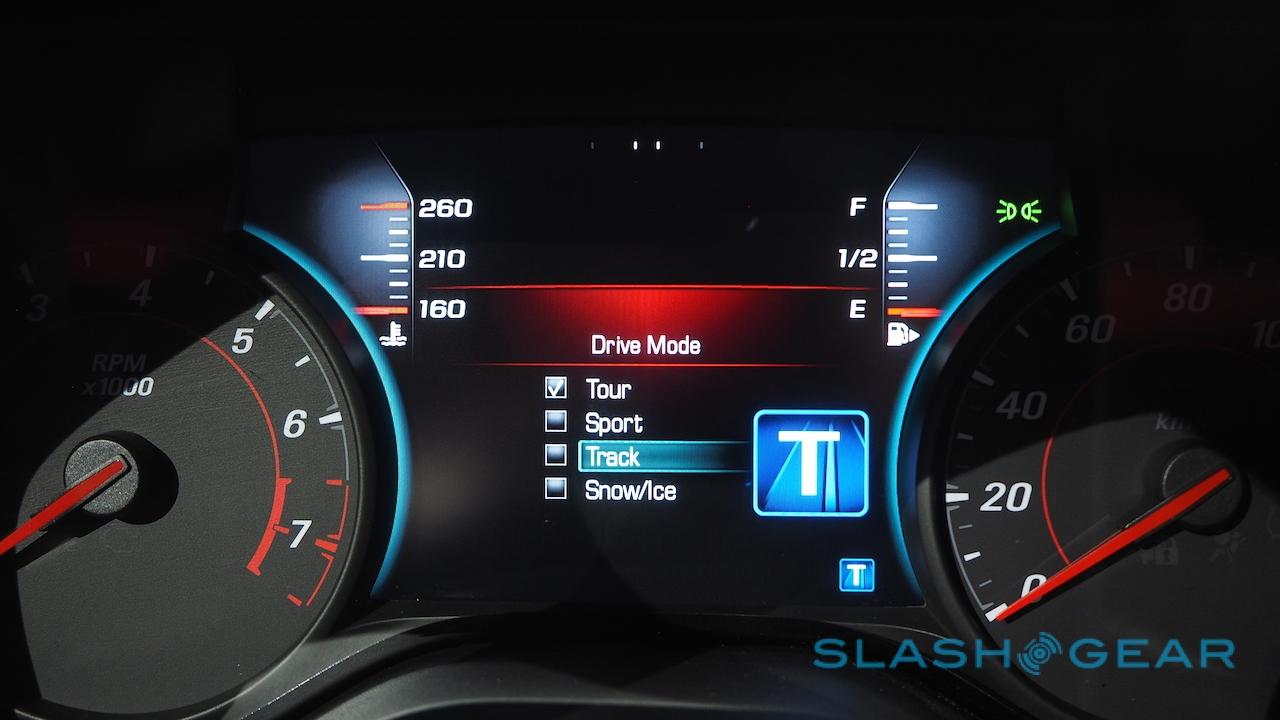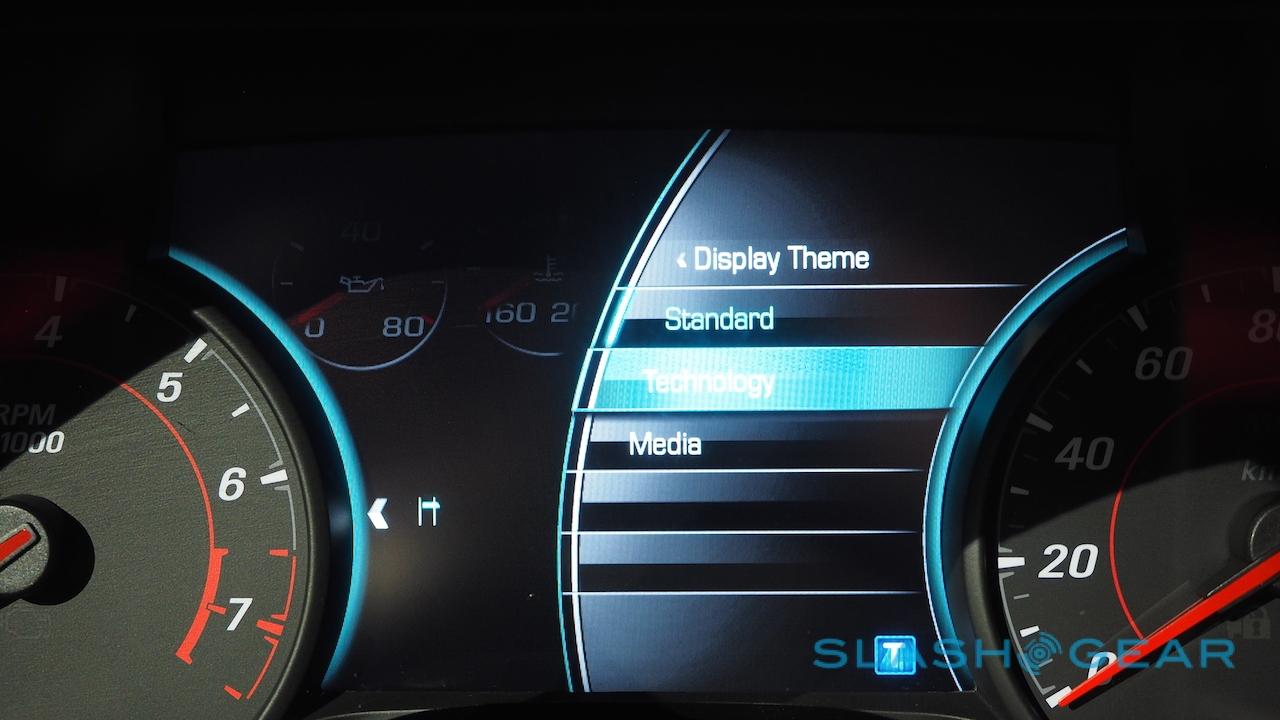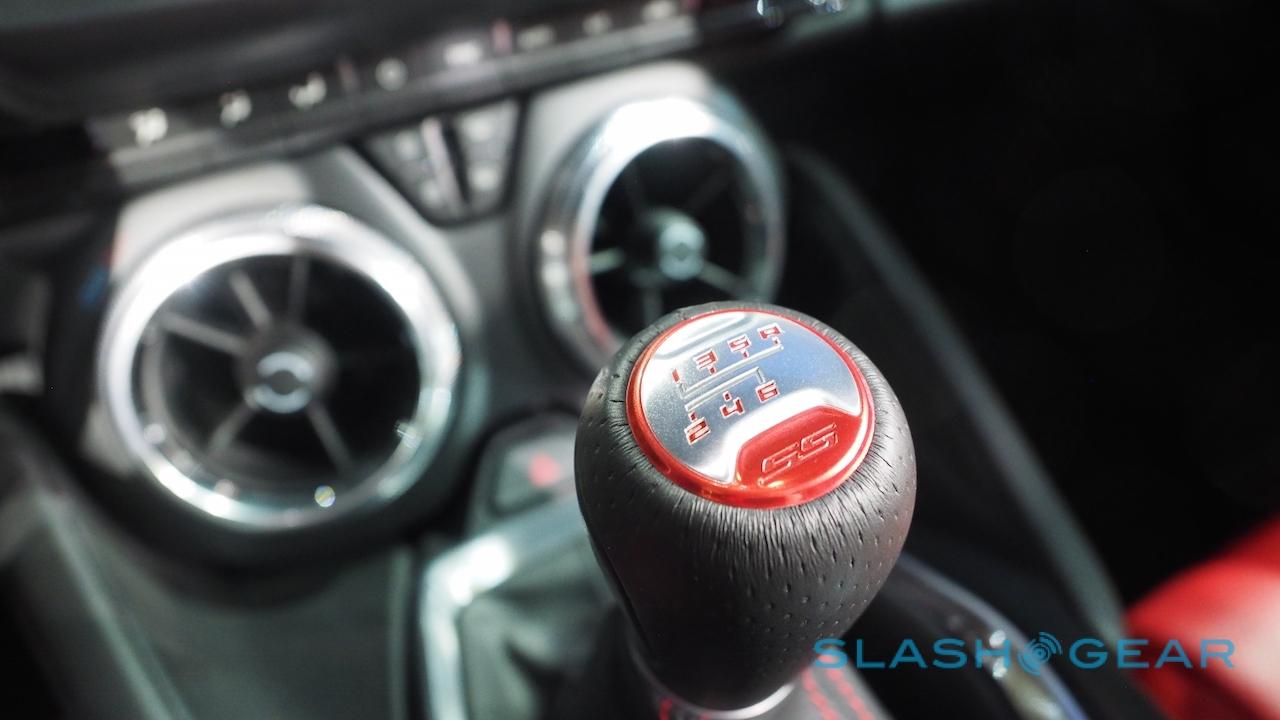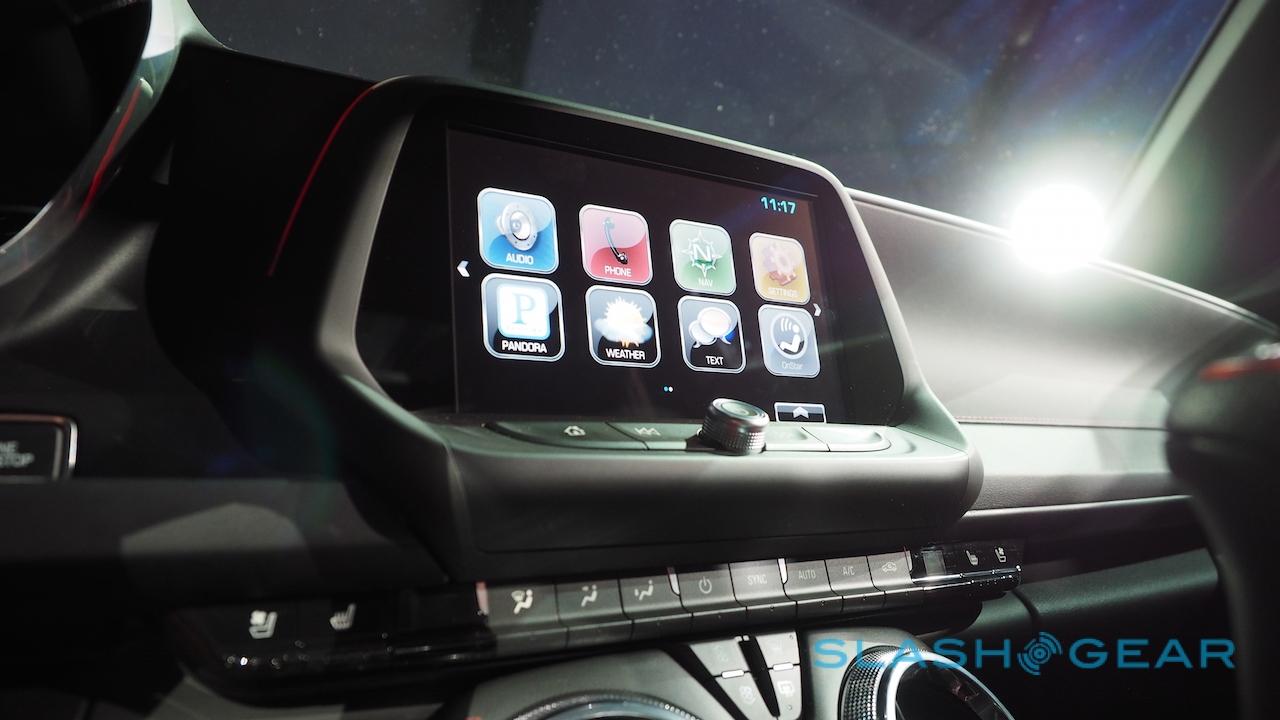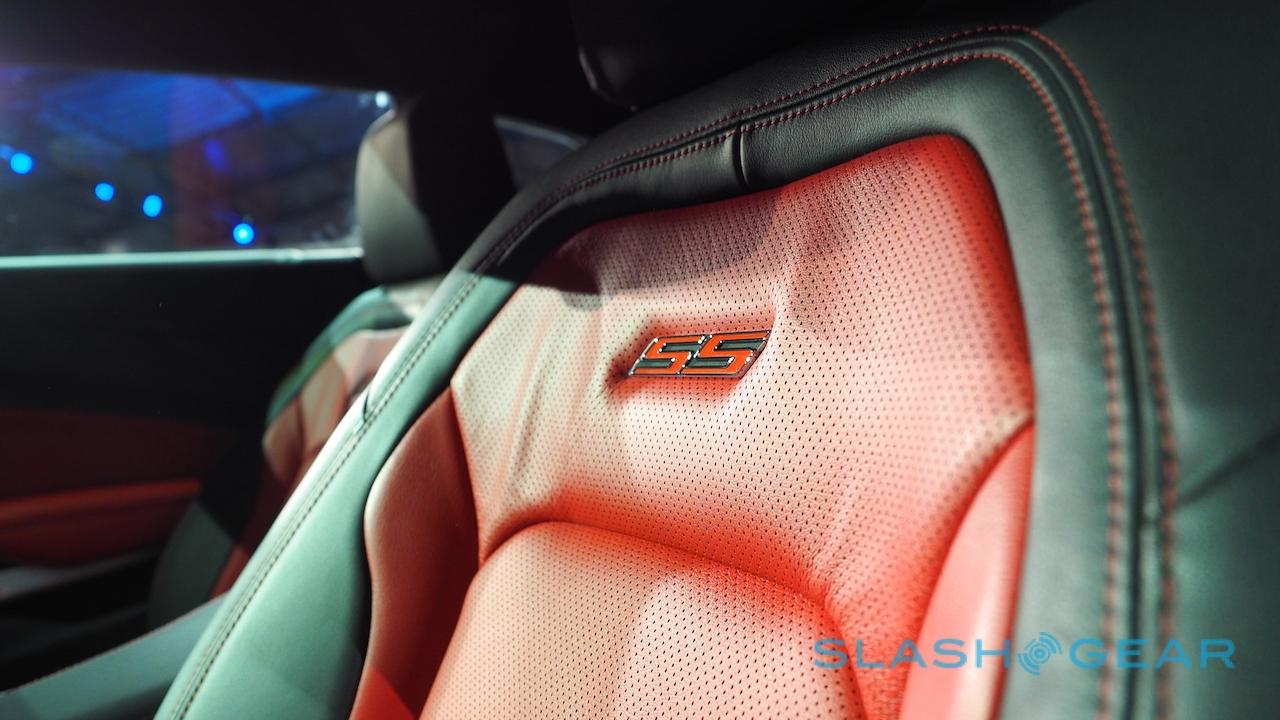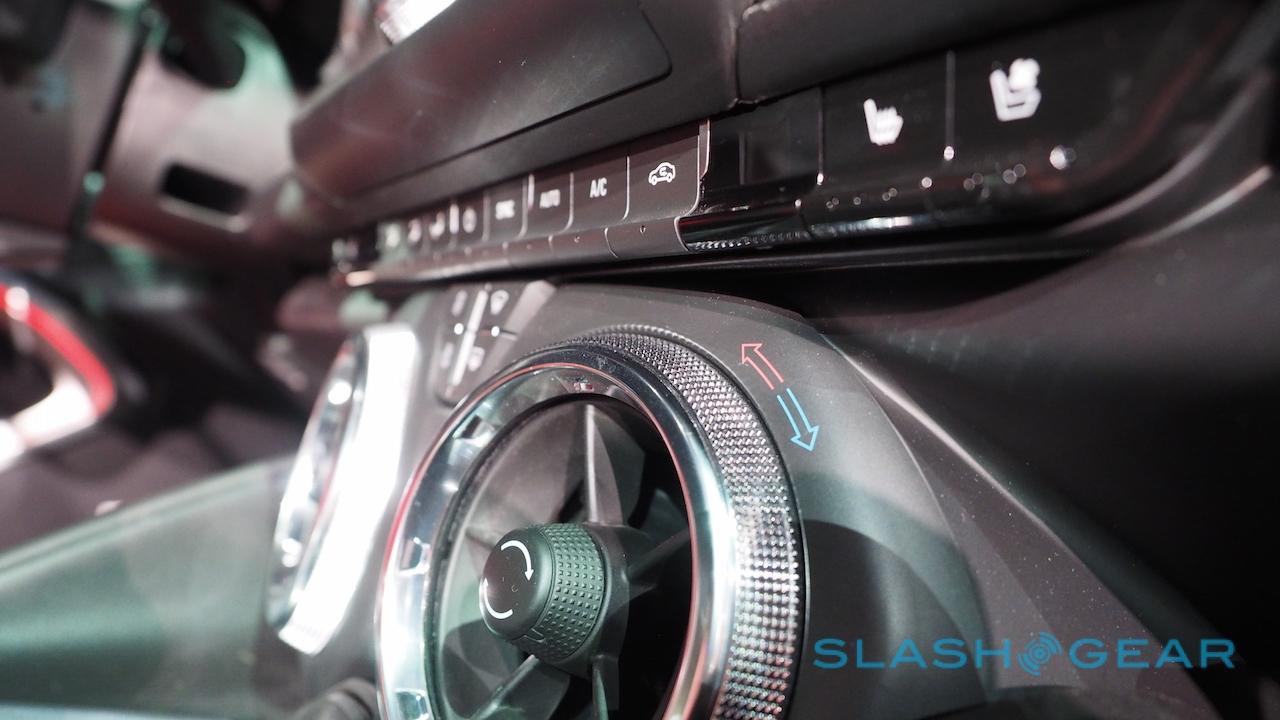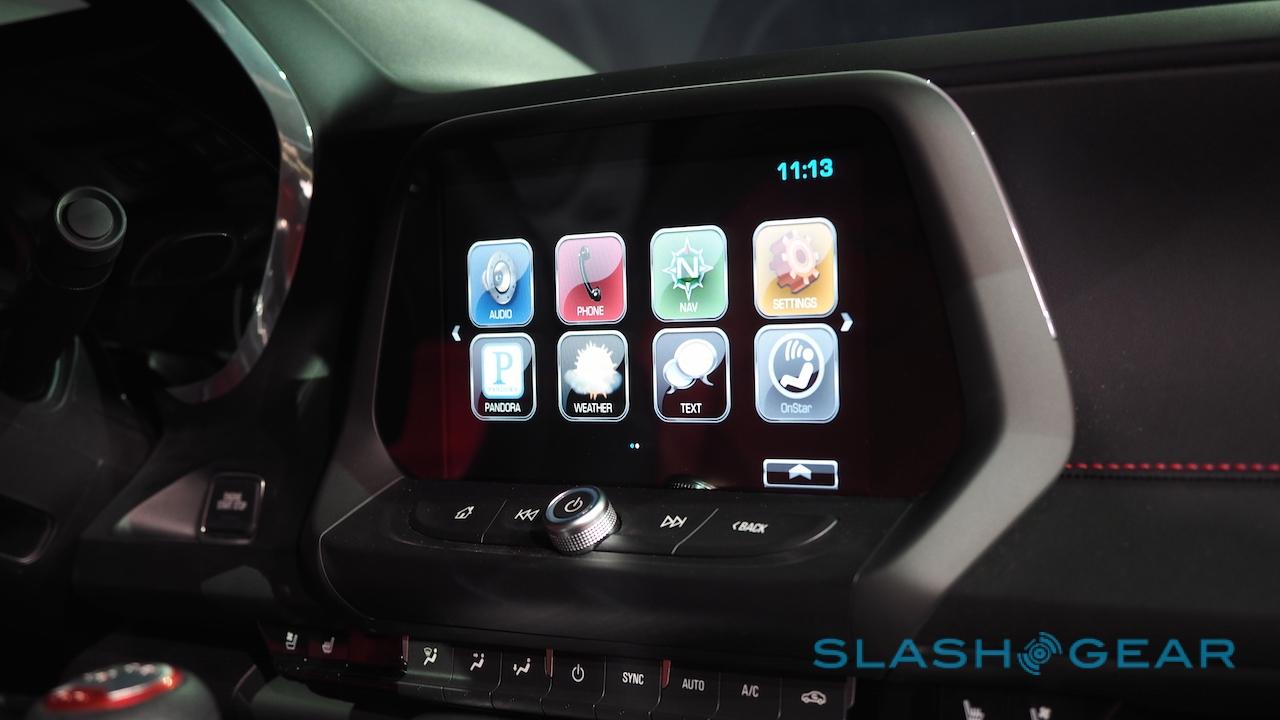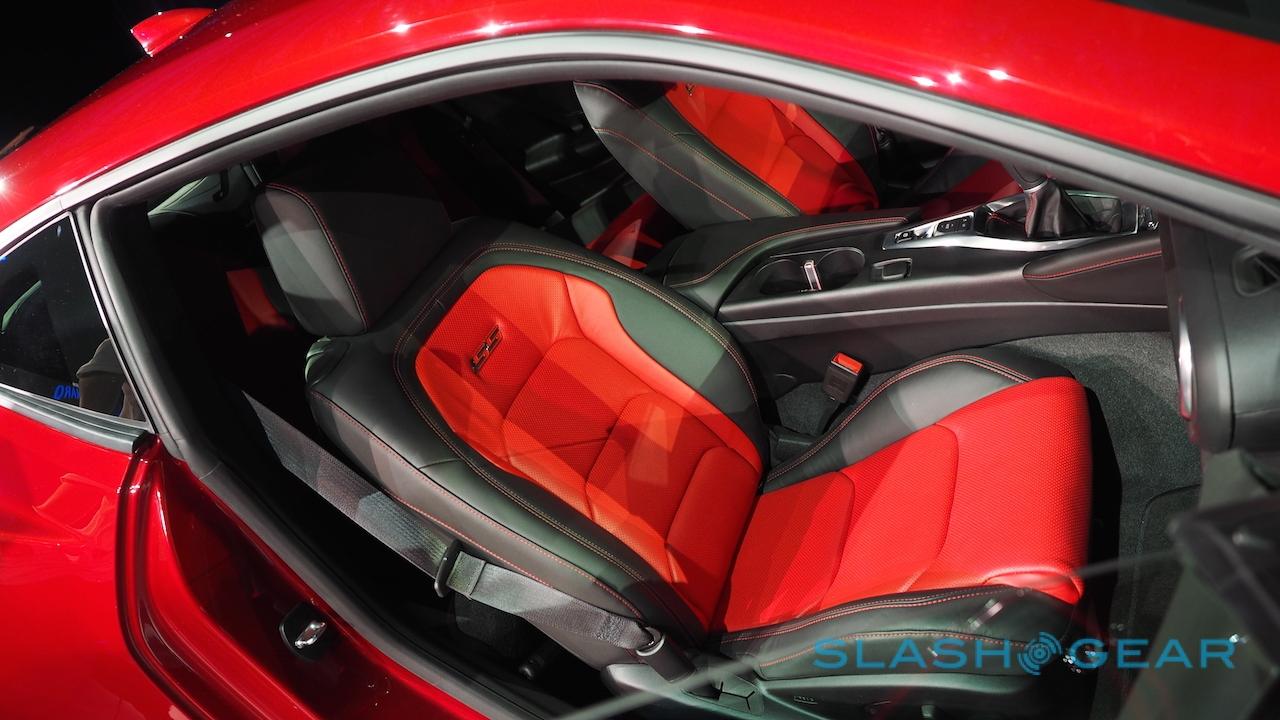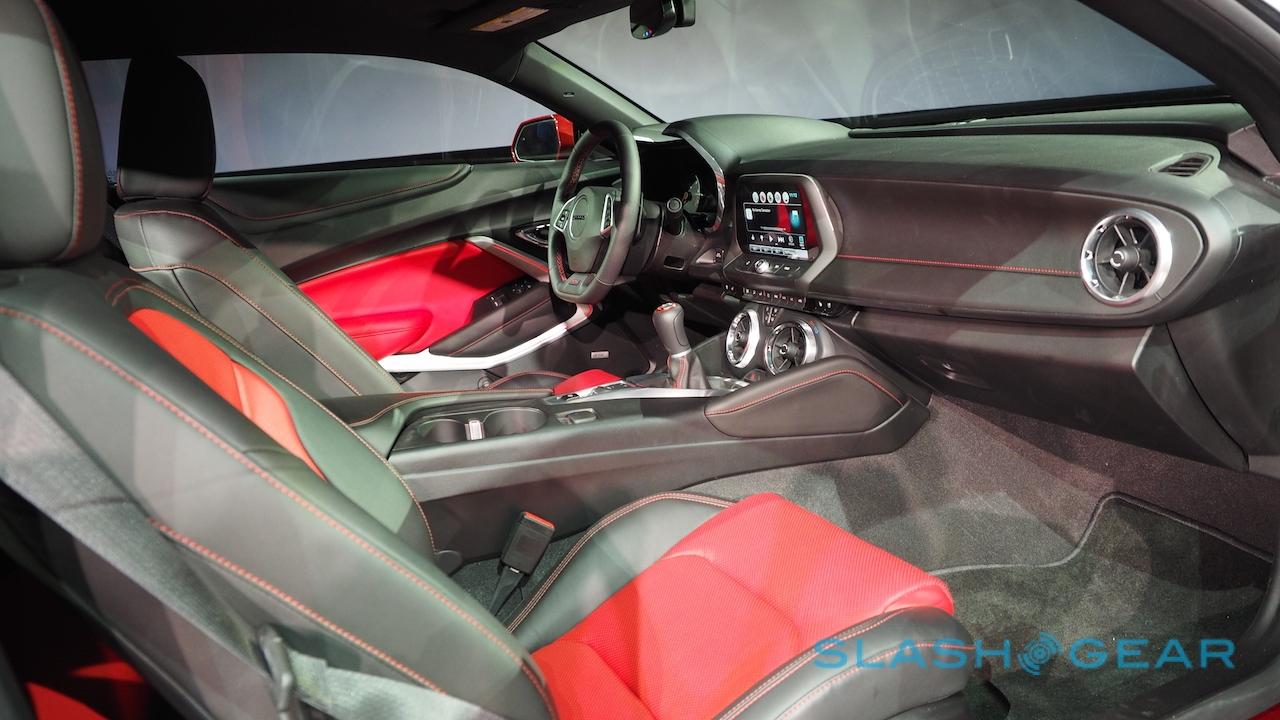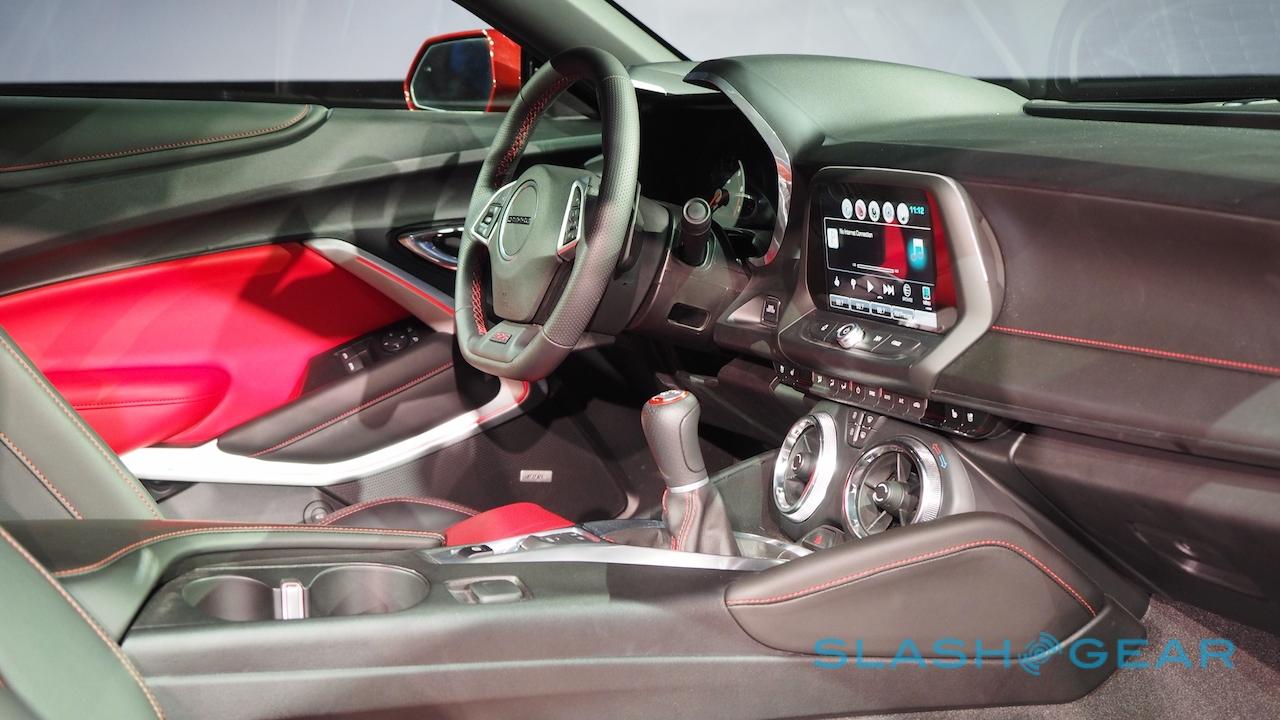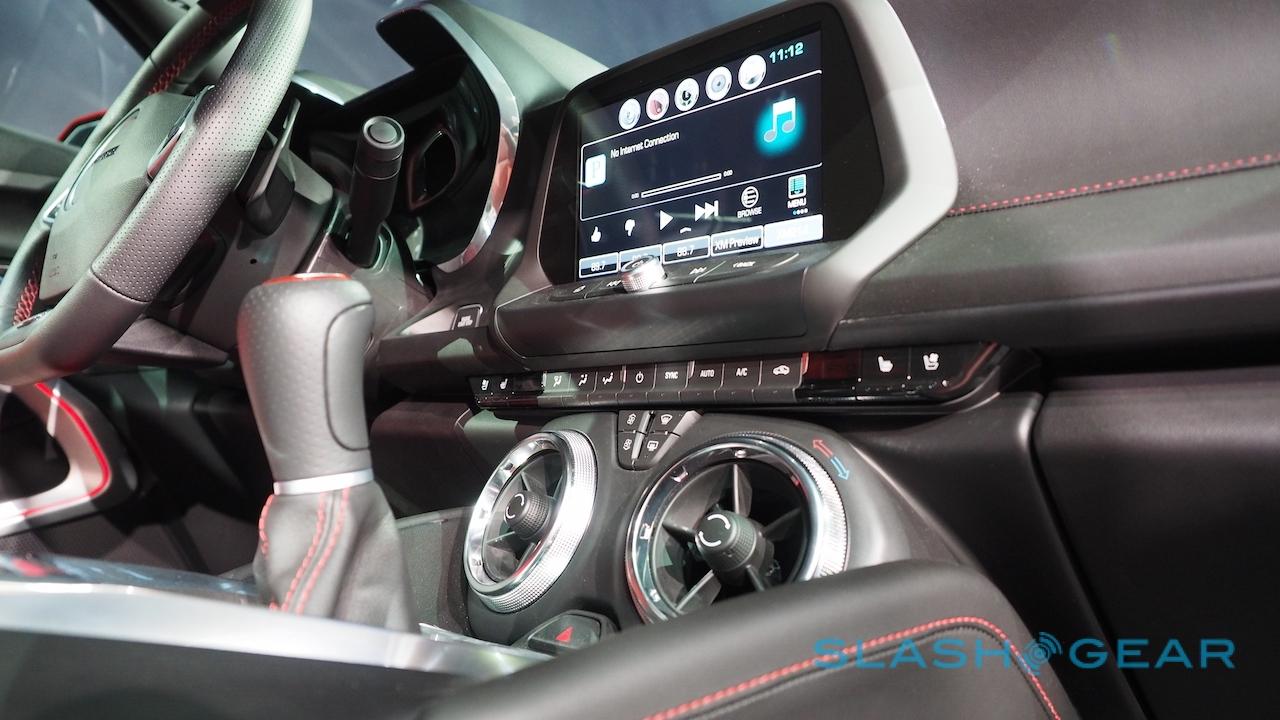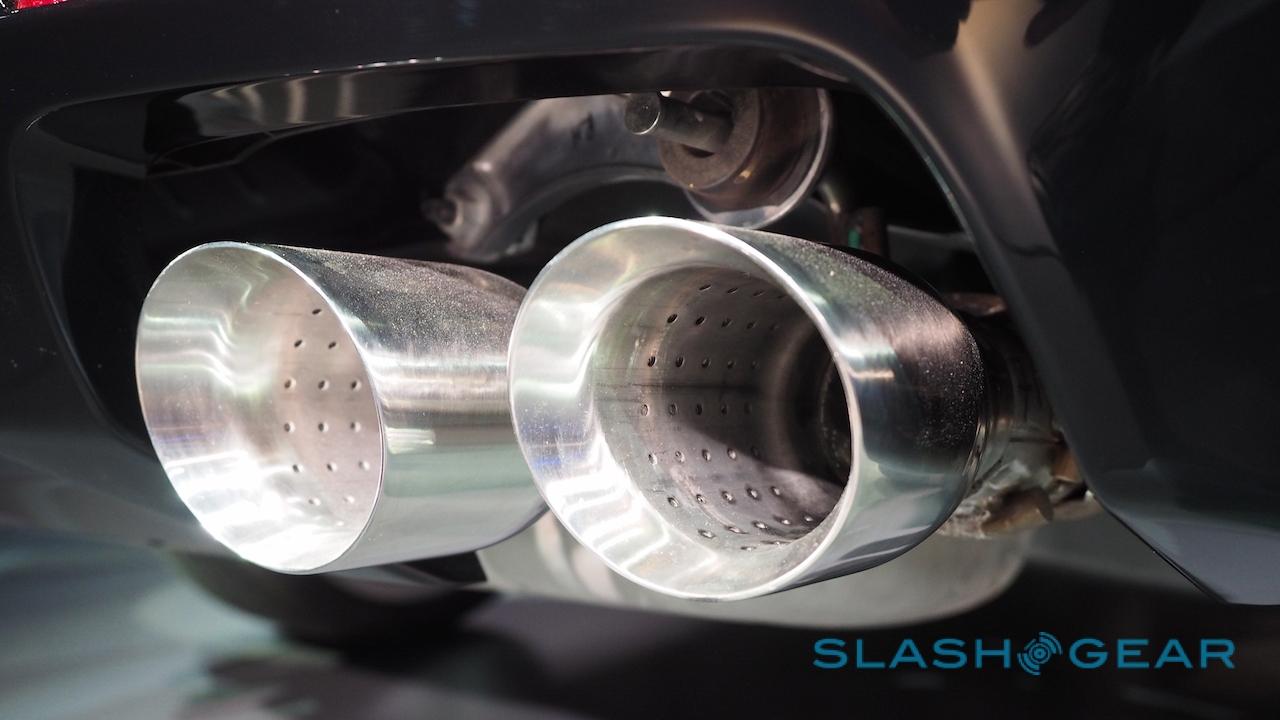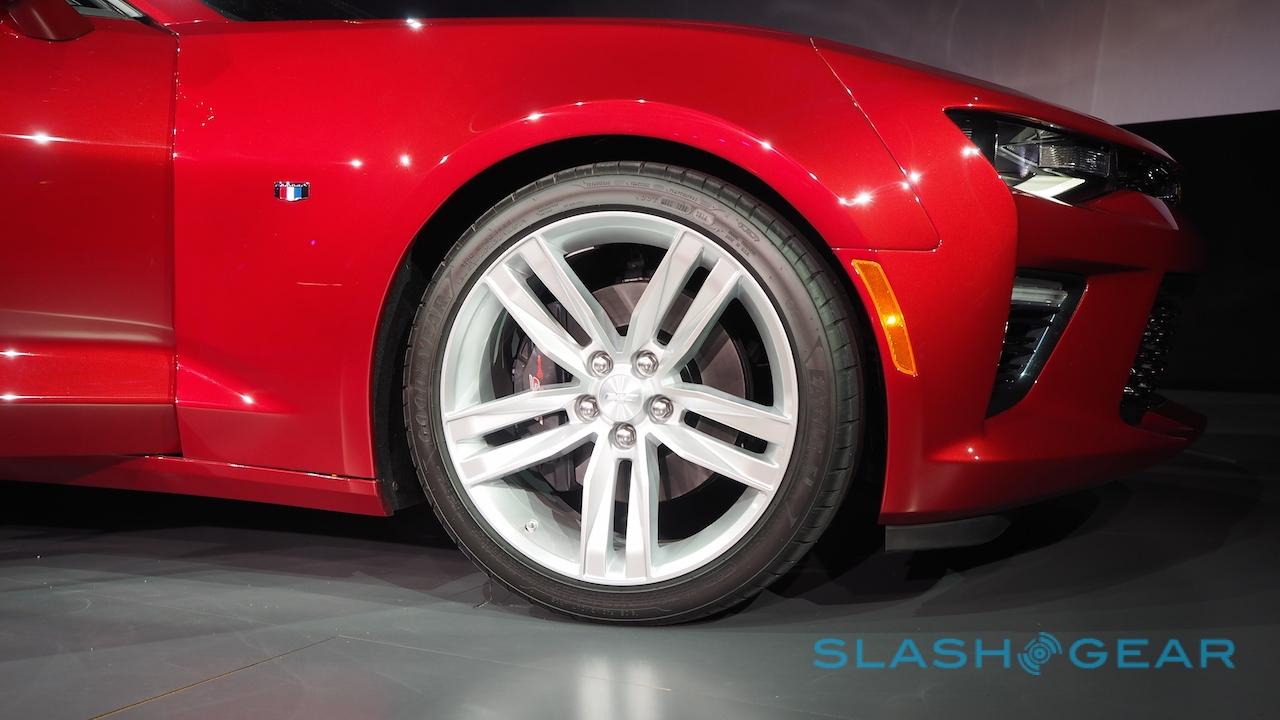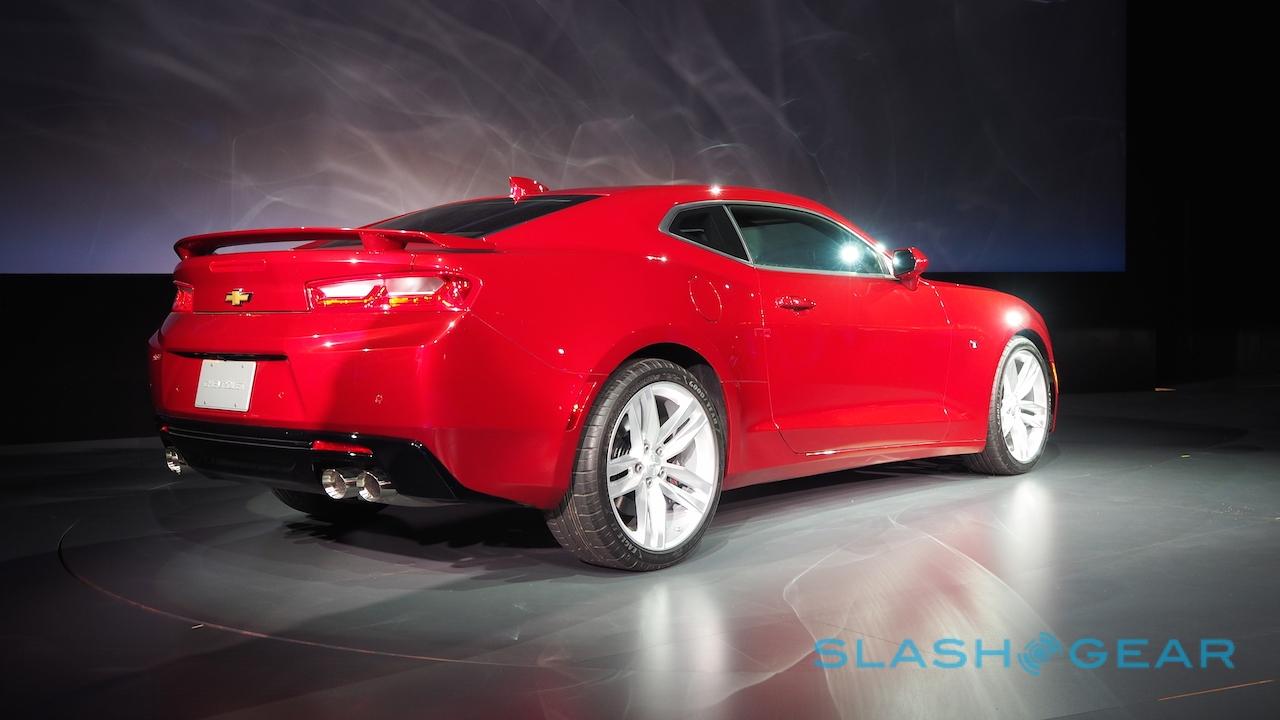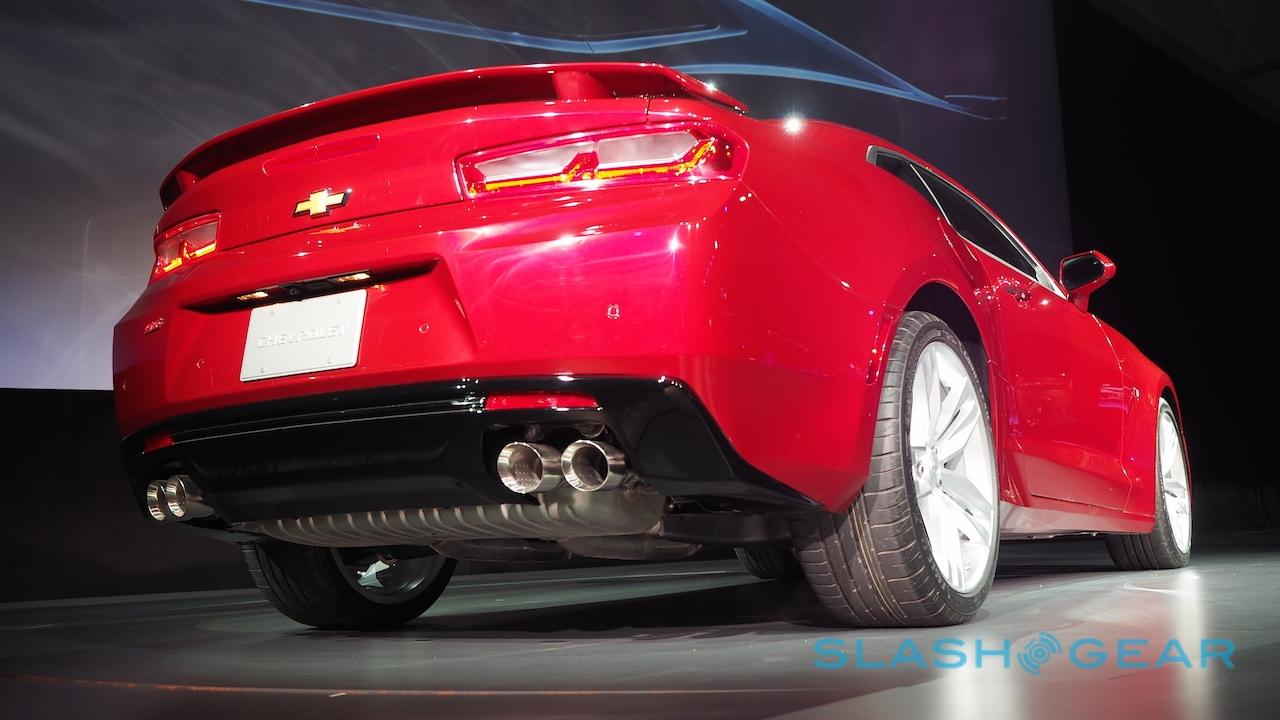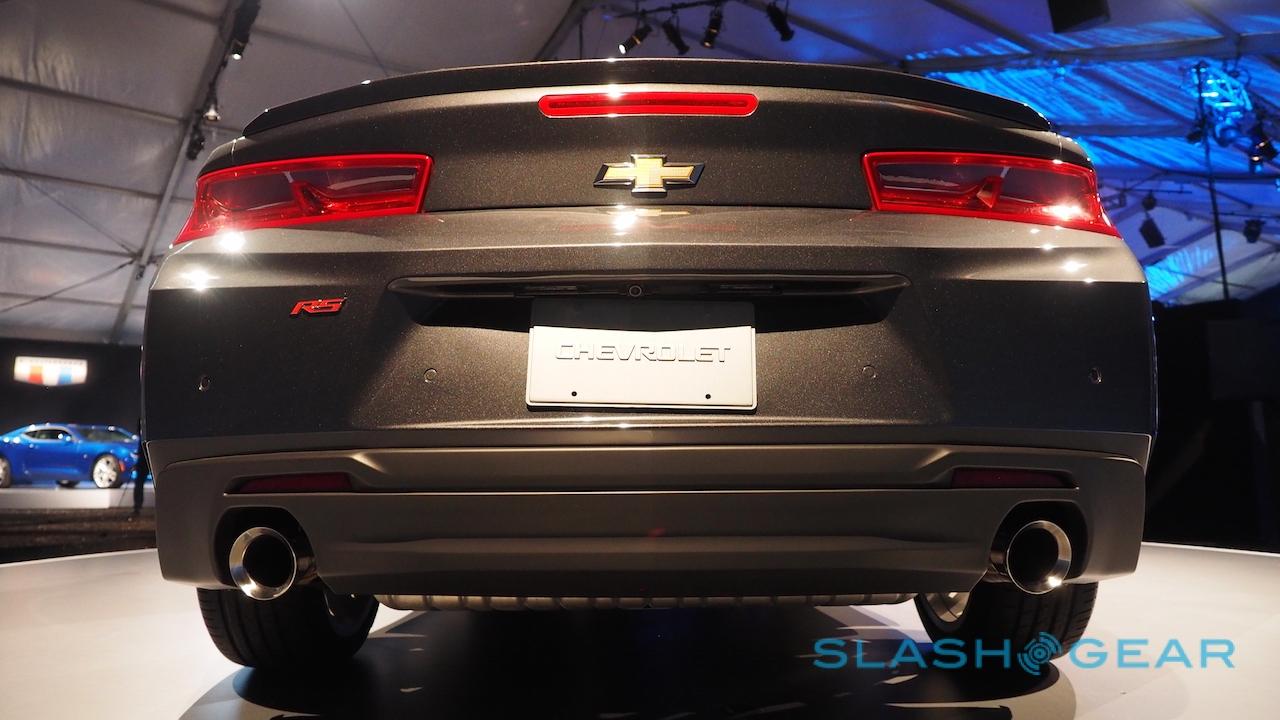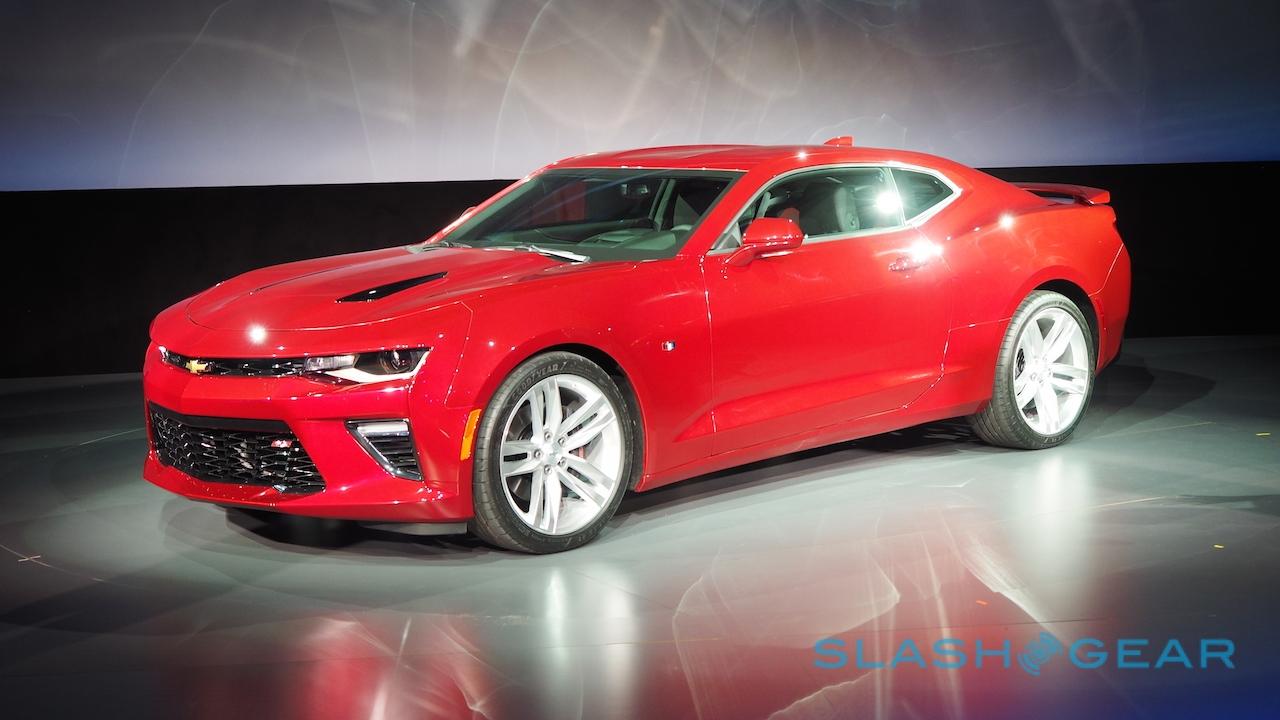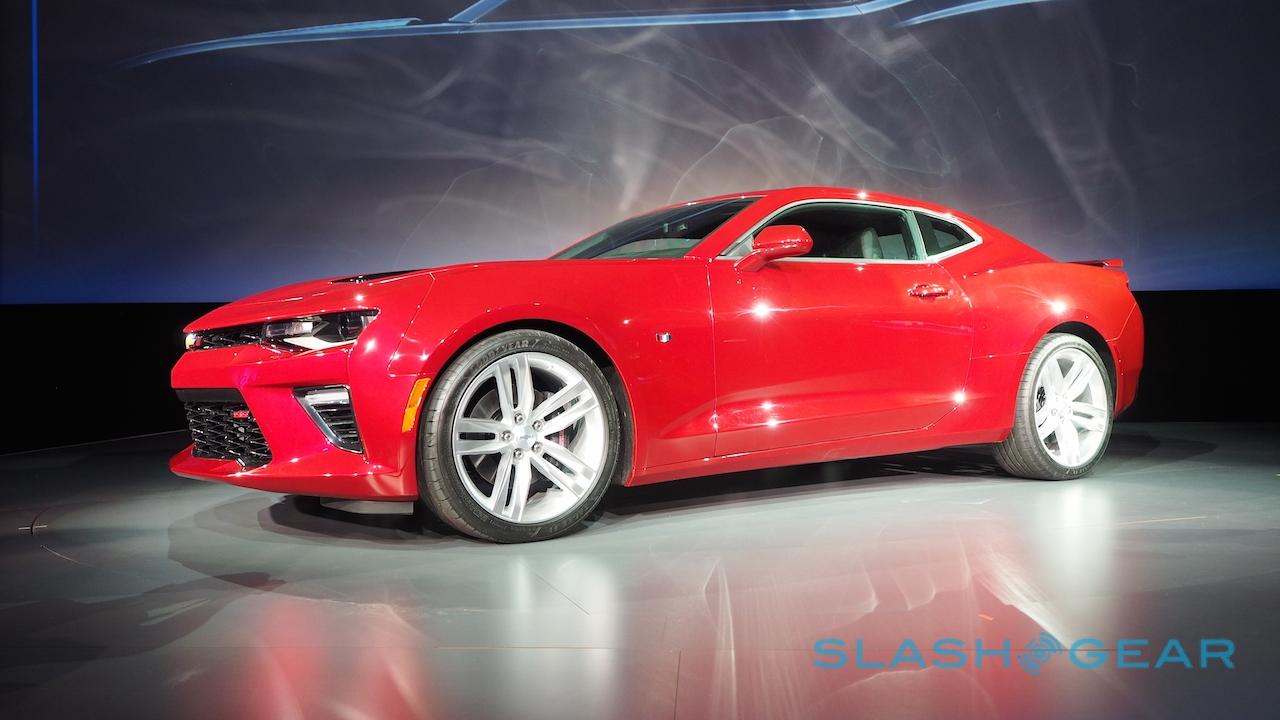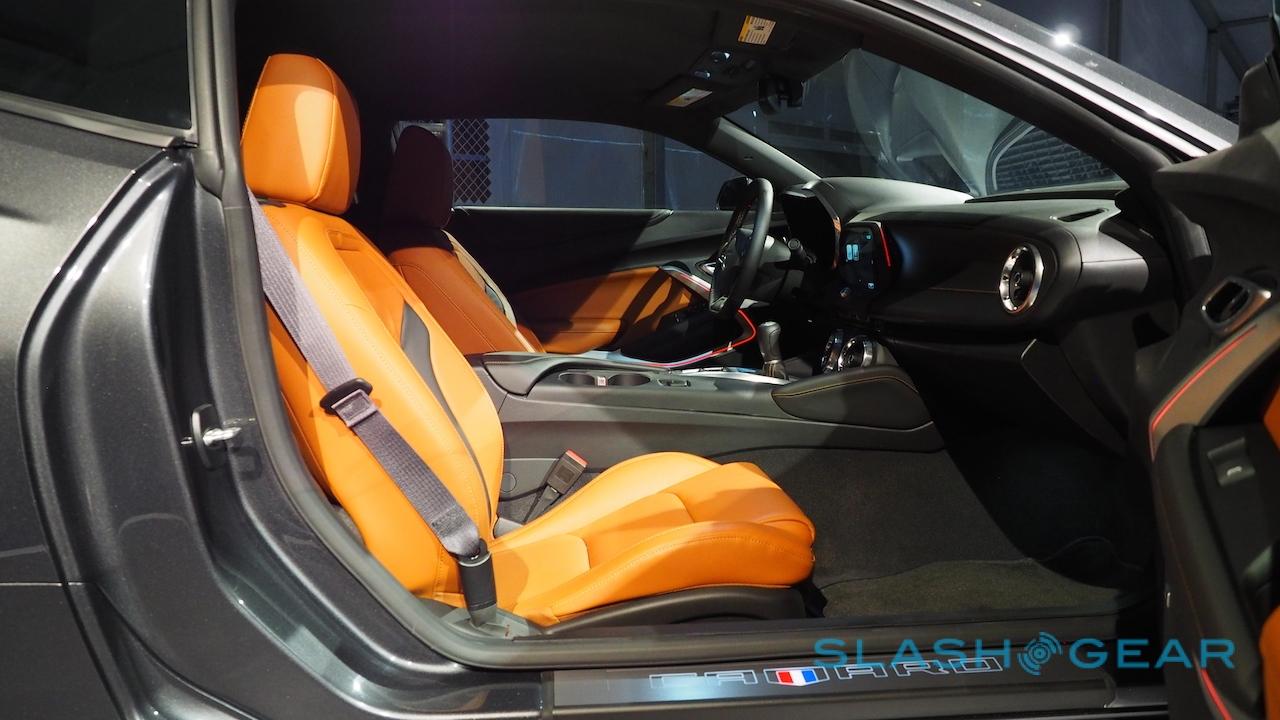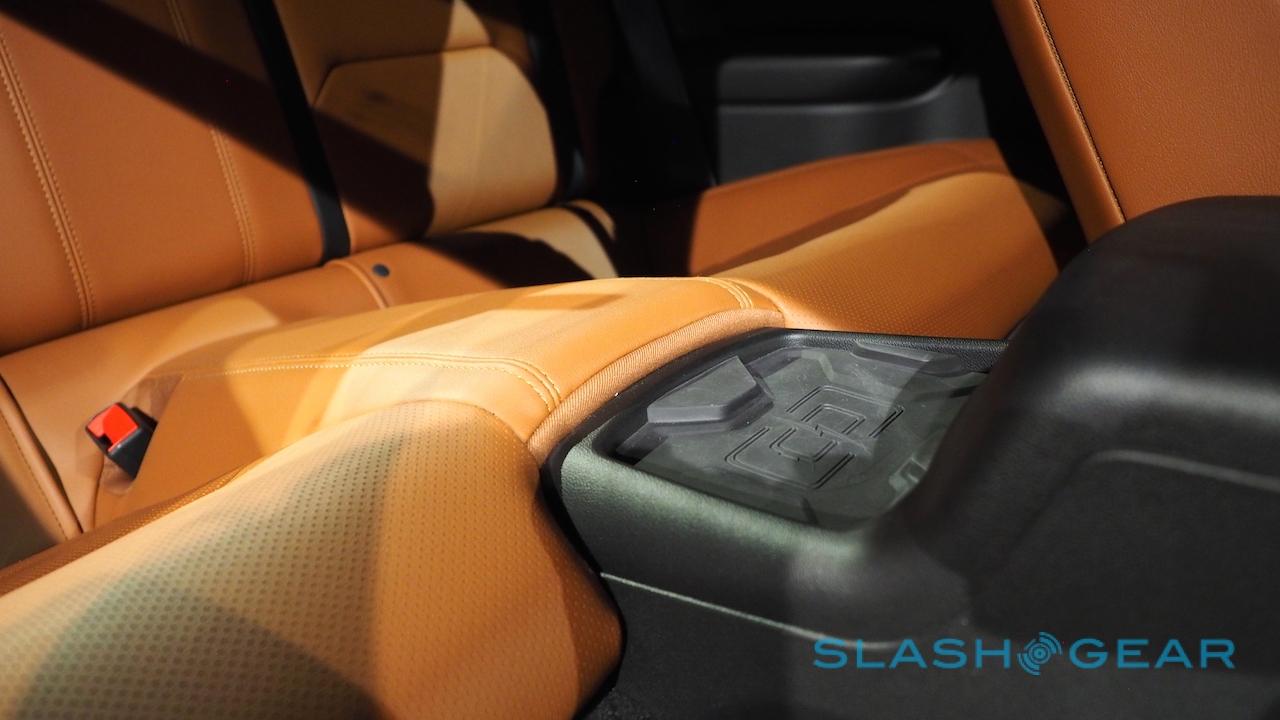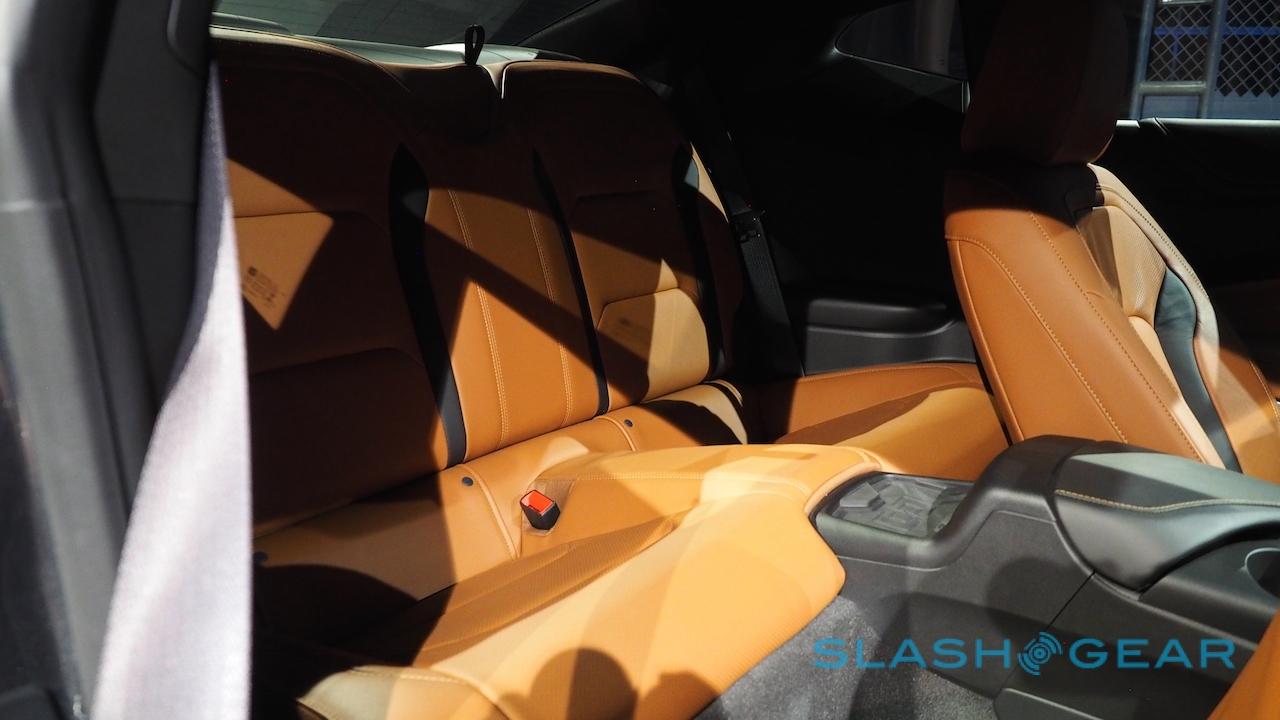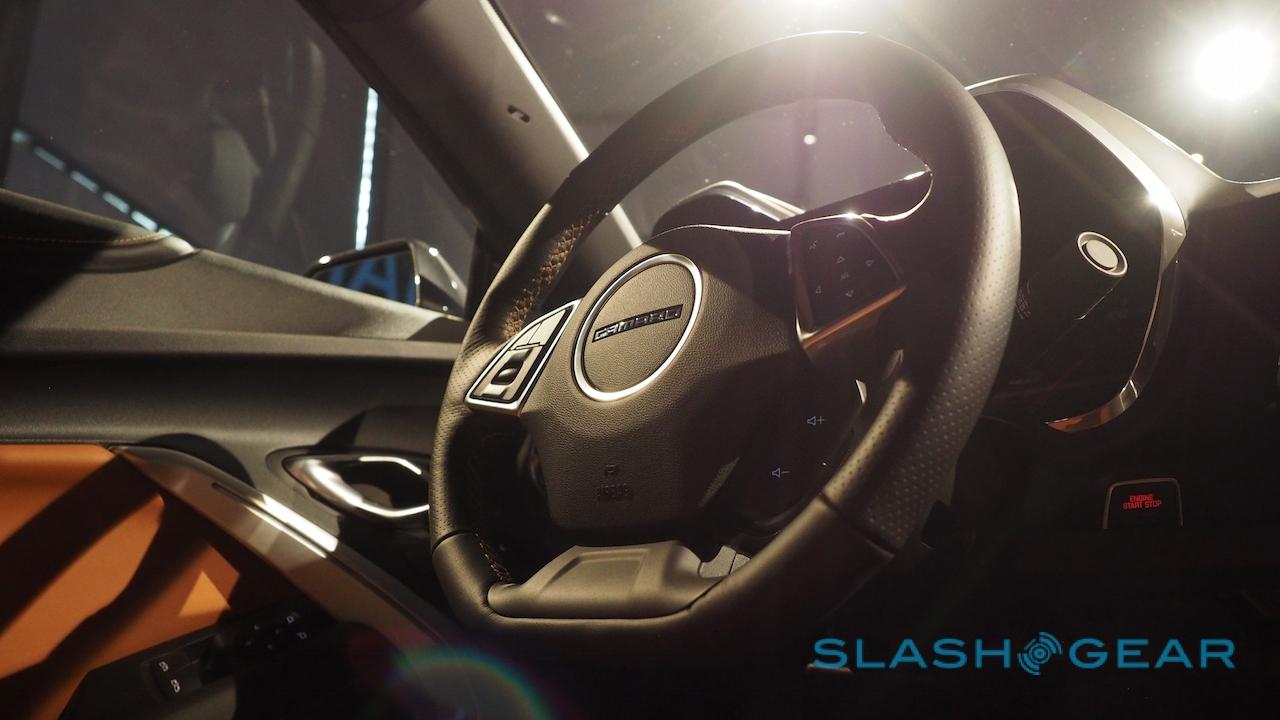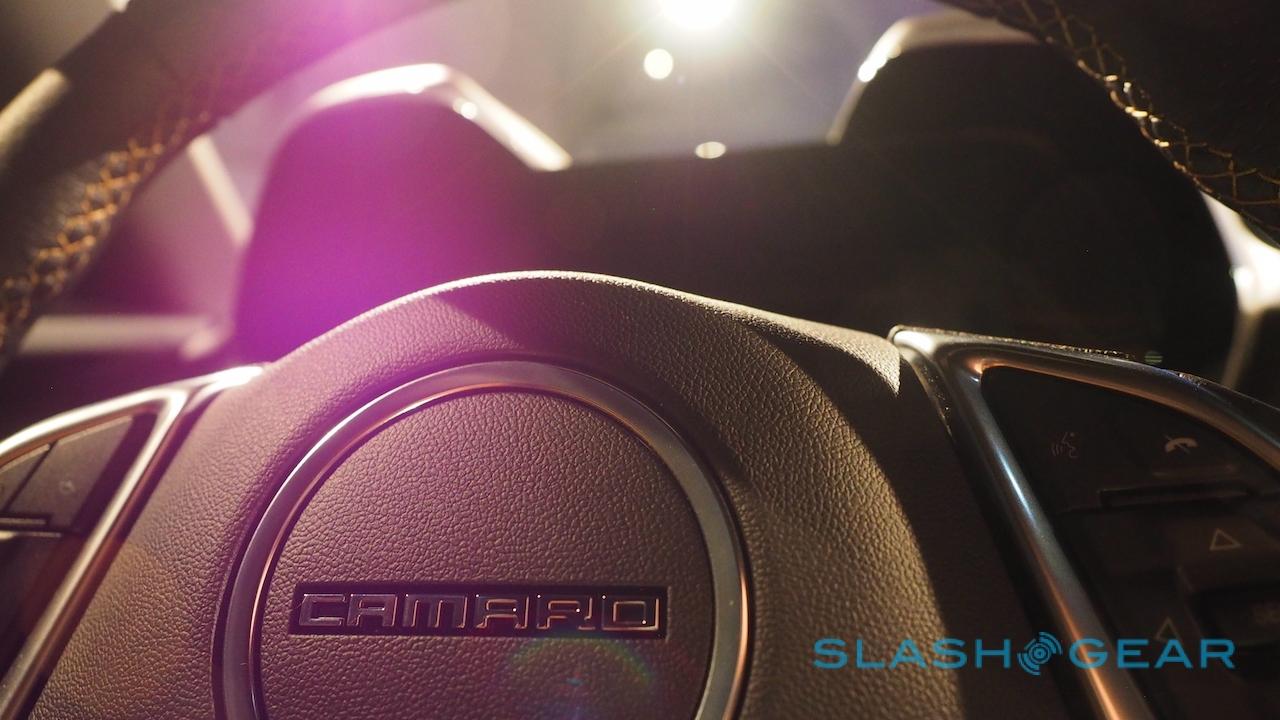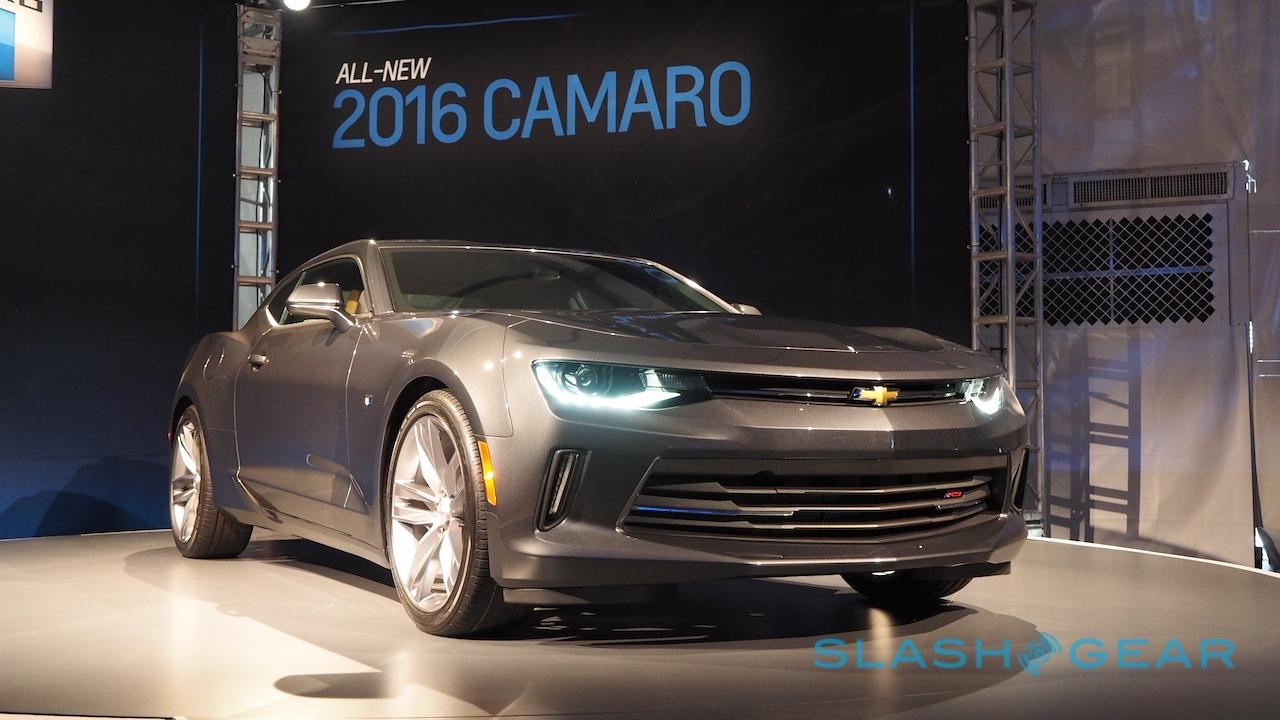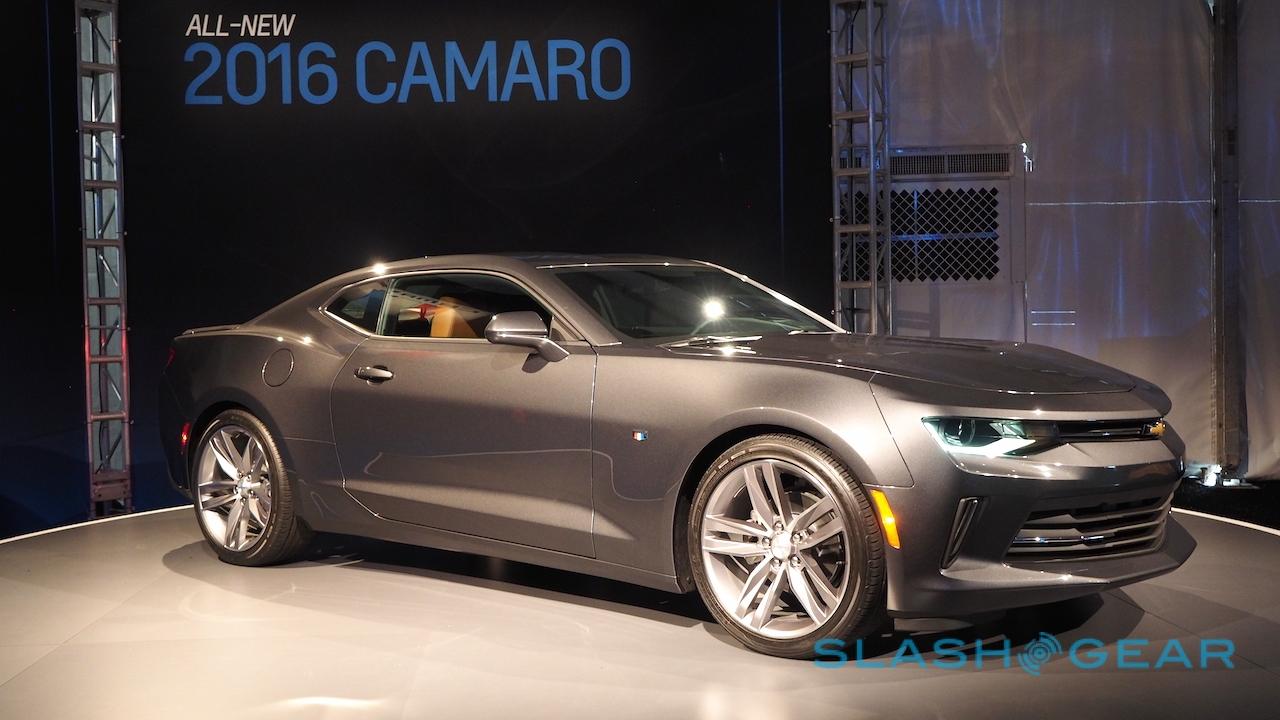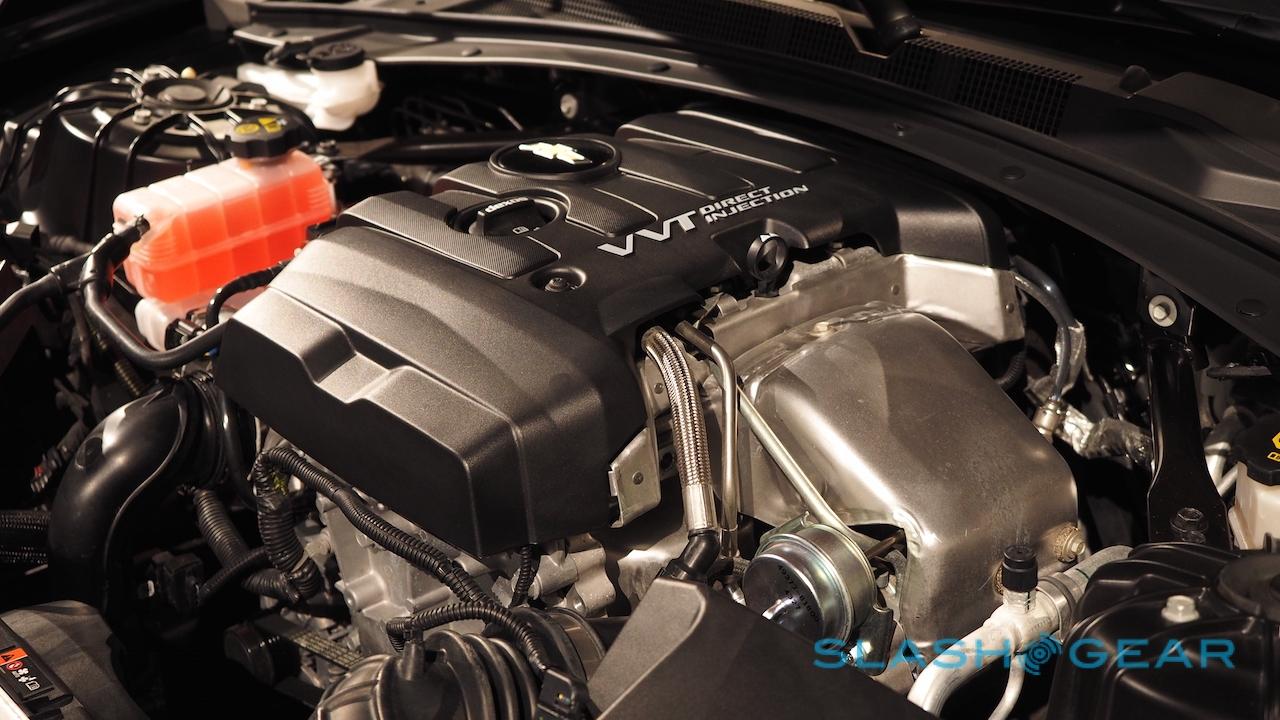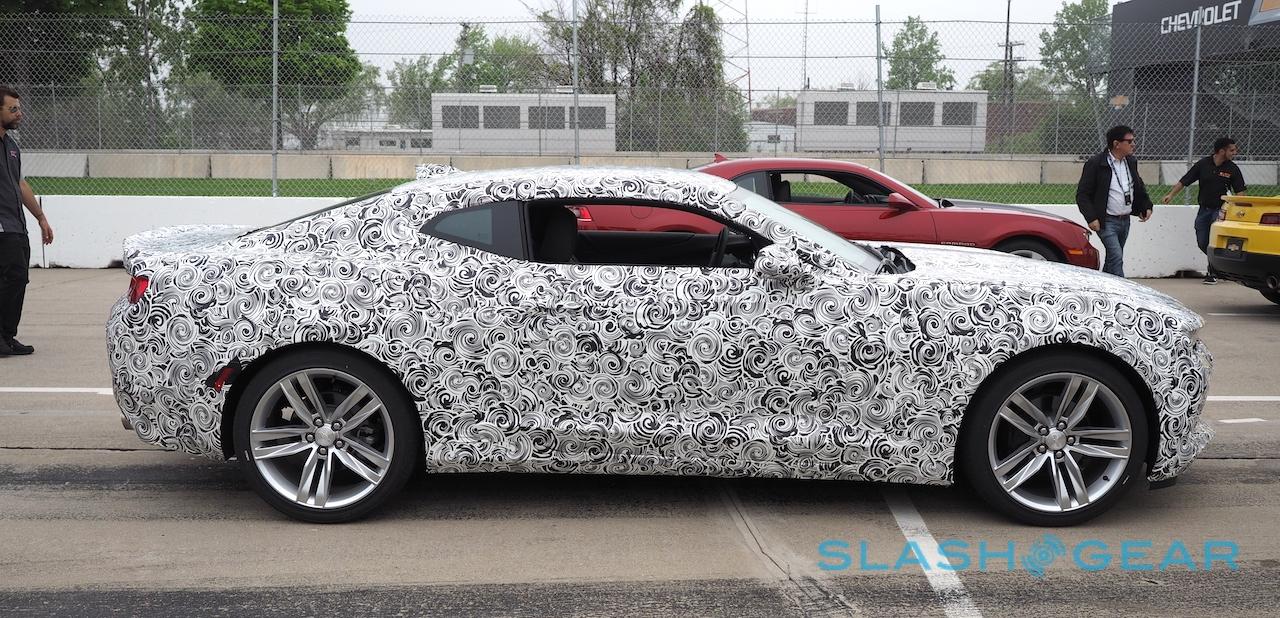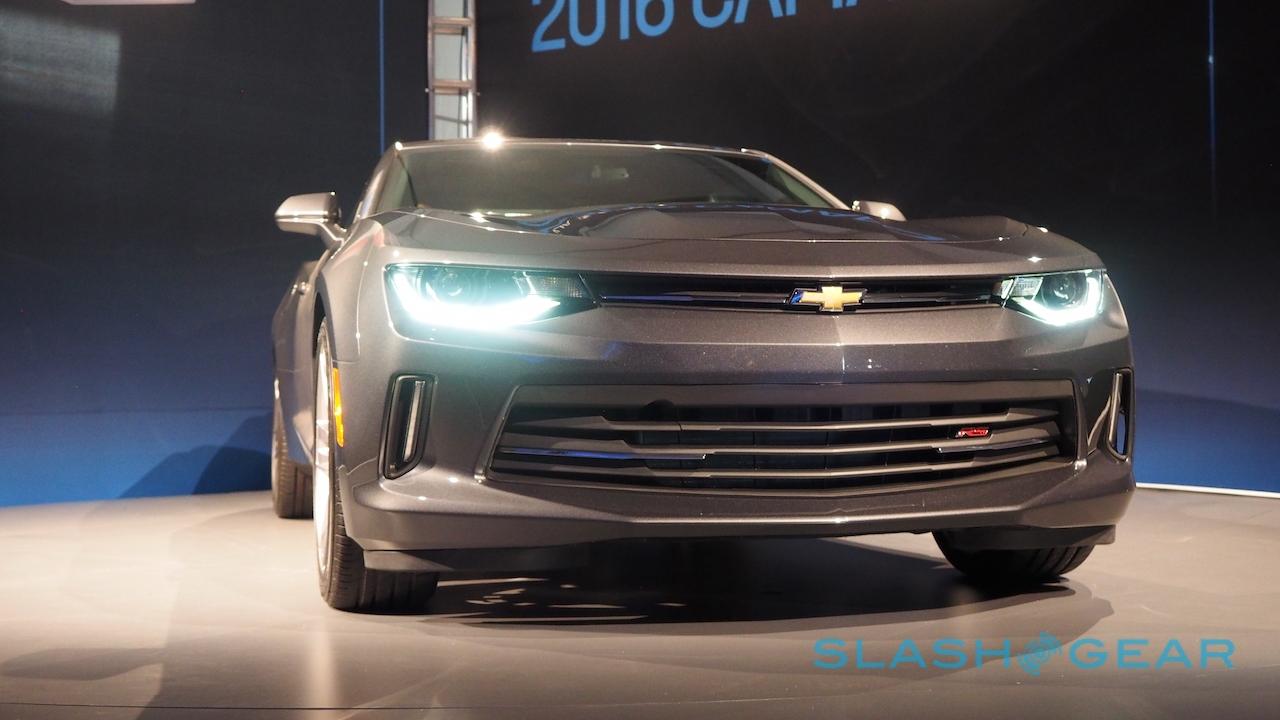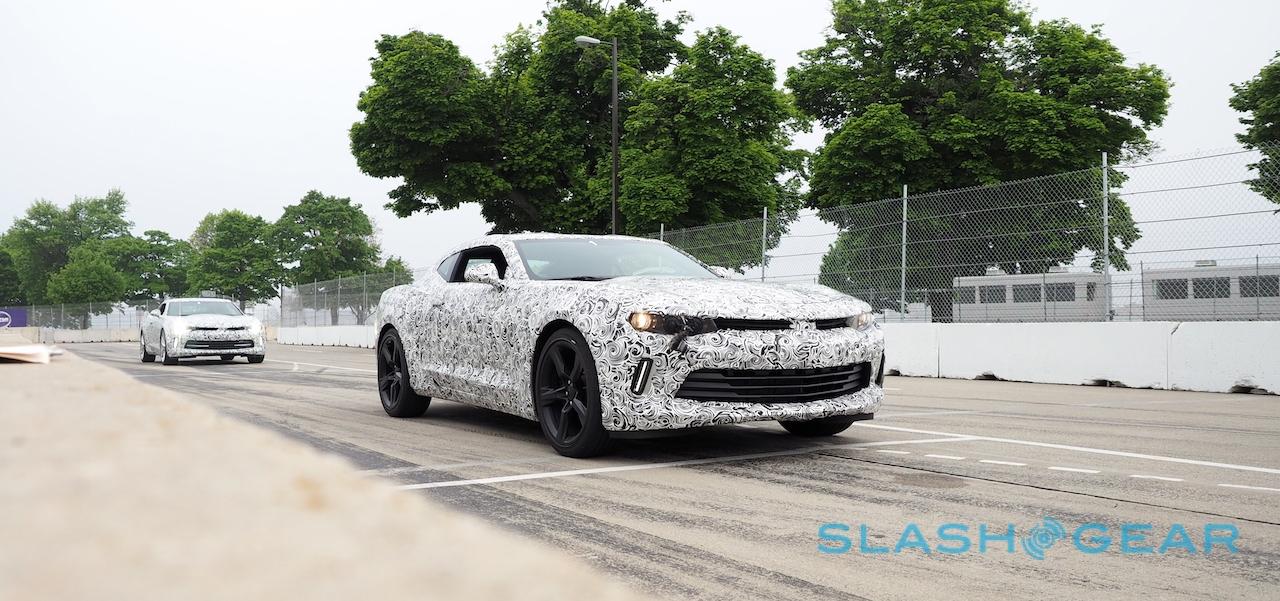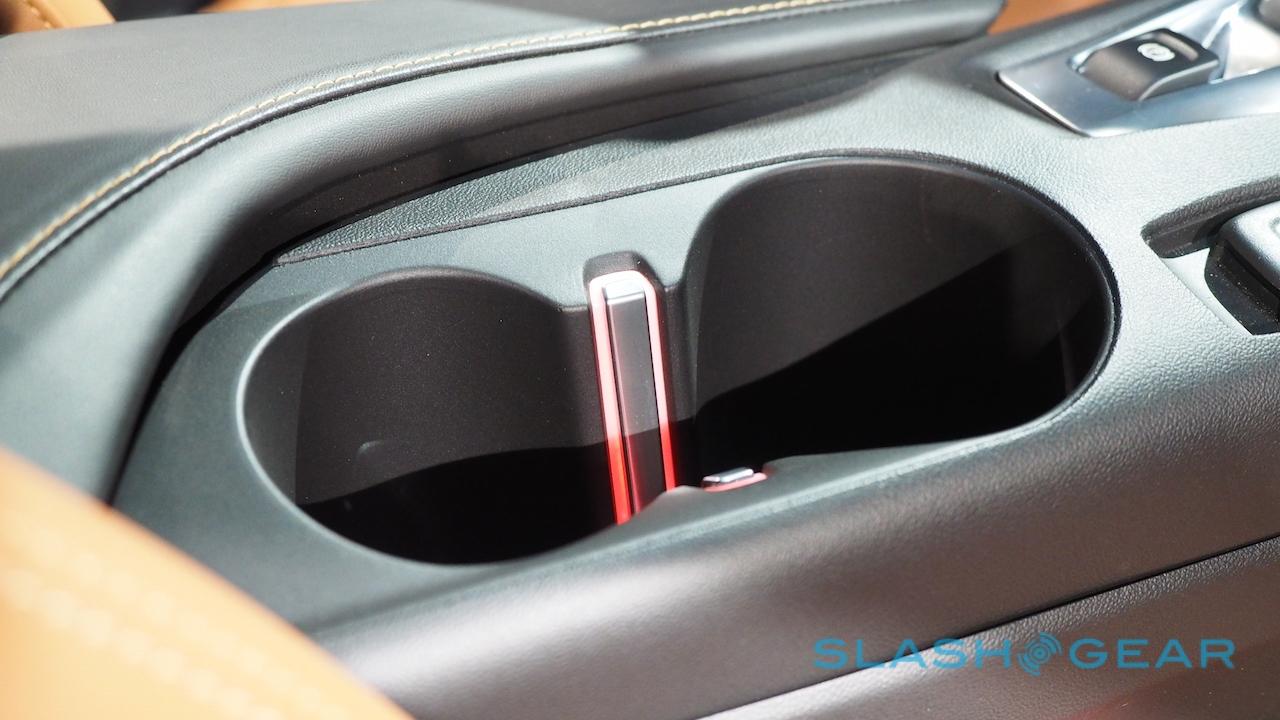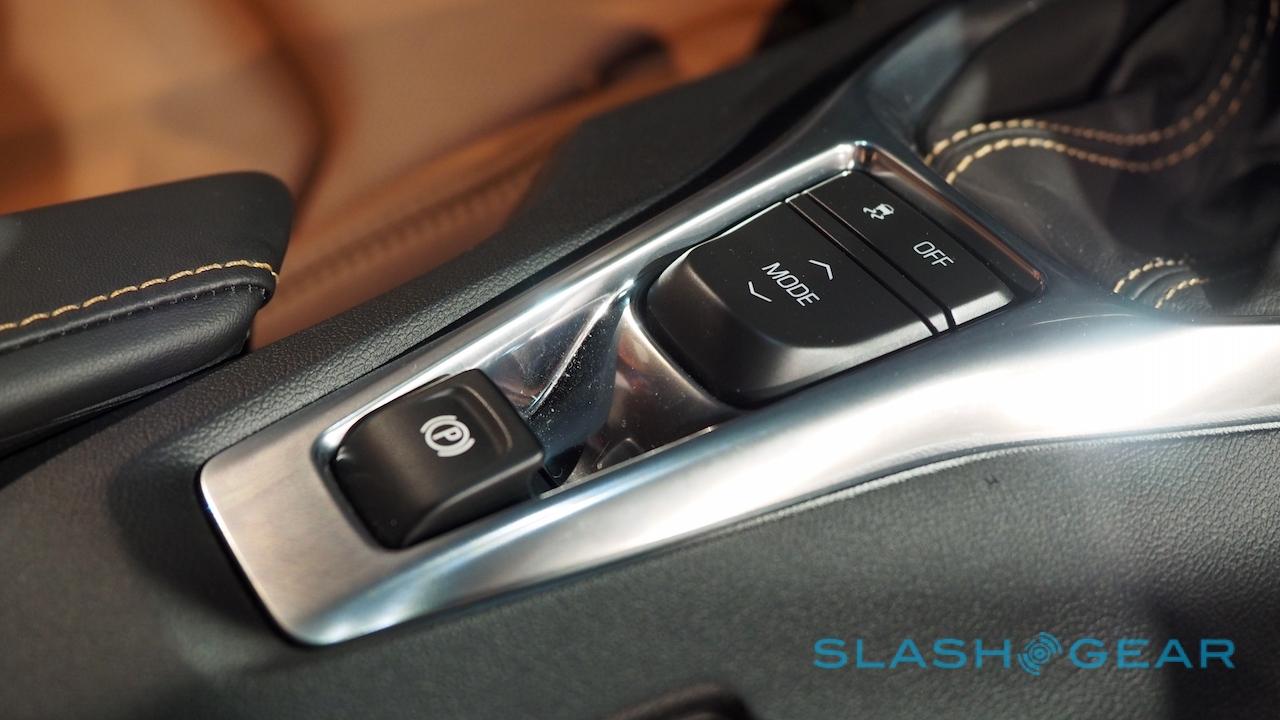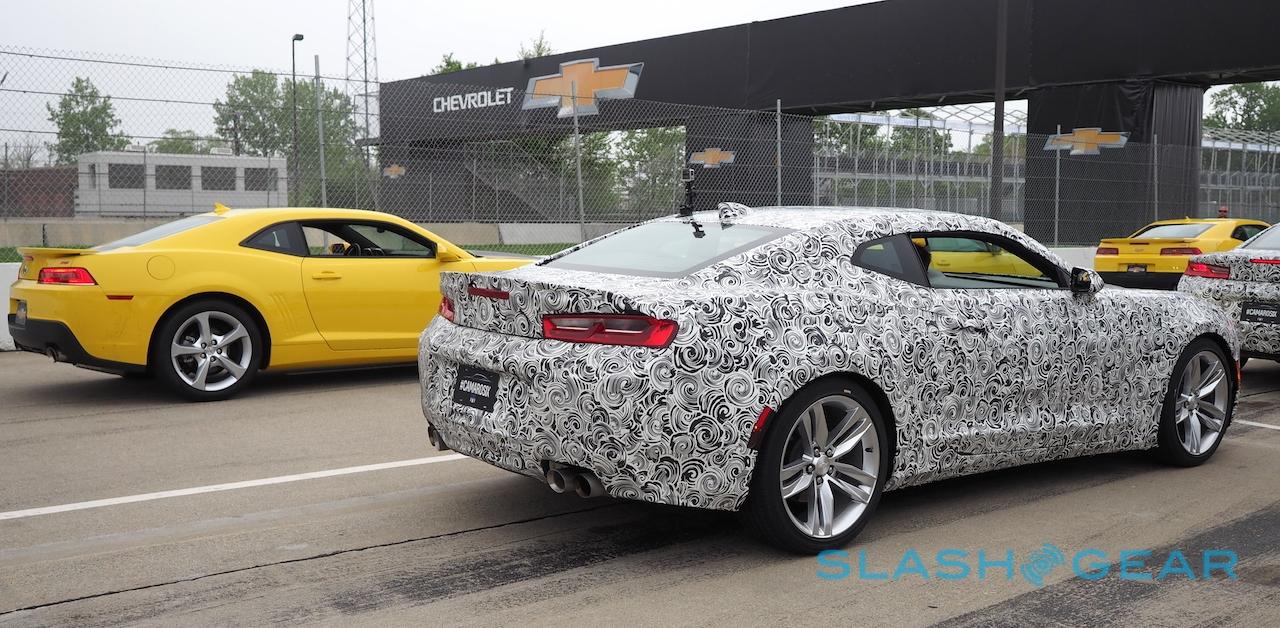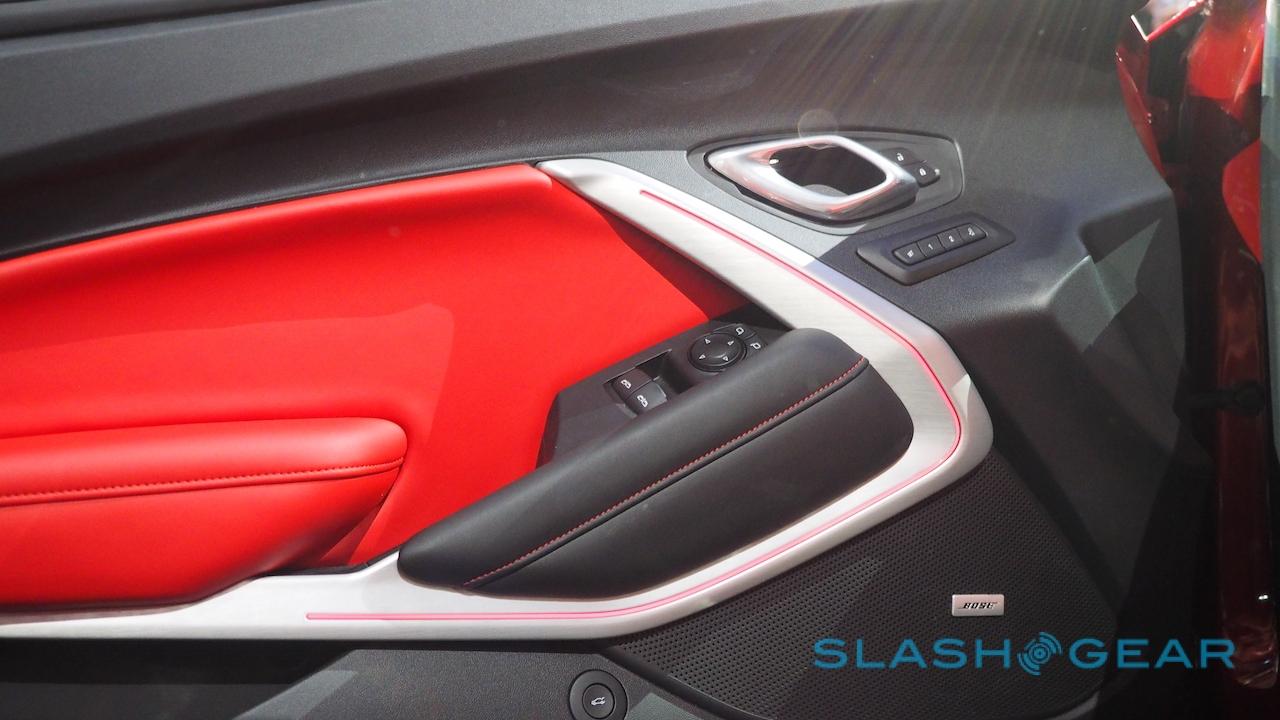2016 Camaro first-drive - Look out, Mustang
Don't underestimate the 2016 Camaro, or indeed how important it is. The chunky Transformers styling may border on the caricature from some angles, but the Camaro is deadly serious when it comes to winning new converts to GM: a full 63-percent of the outgoing model were General Motors virgins. So, when Chevrolet asked if I wanted to take the current engineering prototype out on the track, it seemed rude to say no.
Chevrolet has been playing up the improvements in handling, chassis, and suspension between the 2015 and 2016 cars, and so I started out in the outgoing model for a baseline. In a turn around Detroit's Belle Isle track- let's call it warm, edging on faintly spirited – the 2015 Camaro V6 showed no reluctance on the straights, its 323 HP and 278 lb-ft of torque still enthusiastic.
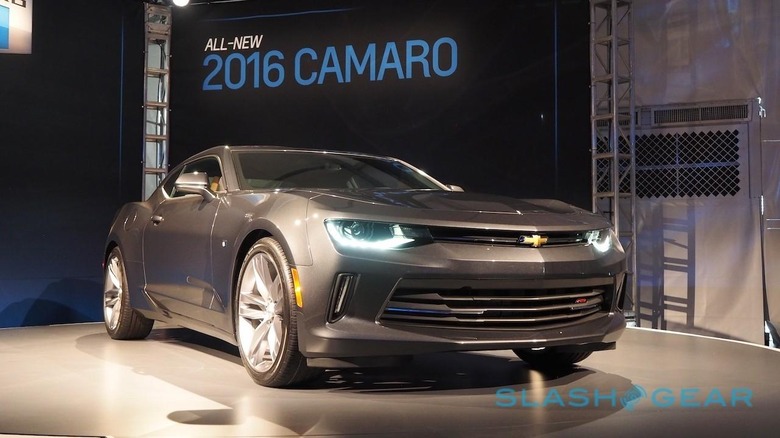
Things aren't so clean when you reach the corners, however. There the old car's weight starts to make itself known, rolling through the bends, and generally demanding your attention at all times and some aggressive braking to keep the muscle car in line.
So, not short on fun, but not a car that will be accused of being particularly refined. (I feel honor-bound to point out that Chevrolet was able to do near-magical things with the outgoing Camaro, as the surprisingly driver-flattering Z/28 demonstrated).
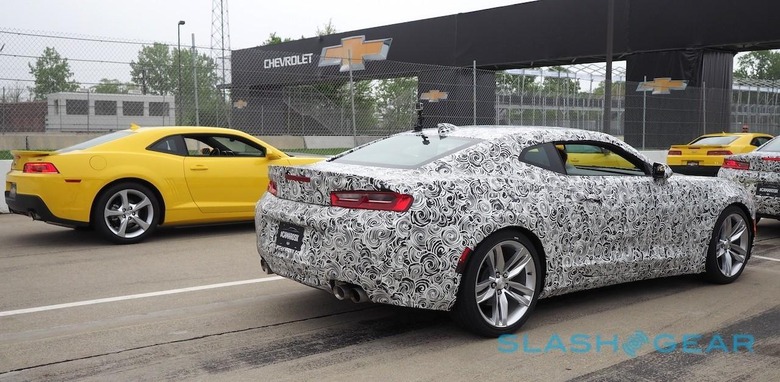
"You'll notice the mass reduction in the first ten feet," Chevrolet's Mark Reuss, executive vice president of global product development, had promised of the 2016 Camaro beforehand. Actually, Reuss is wrong: the first thing you notice in the Camaro V6 is the noise.
That's a good thing, a really, really good thing. Engine noise in performance cars has become unexpedtedly controversial in recent years, what with manufacturers often opting to artificially enhance the soundtrack by piping extra growls into the cabin, smoothing out the less flattering frequencies, or some combination of the two. Some models even include a little dial to allow you to turn up or down the enhancement.
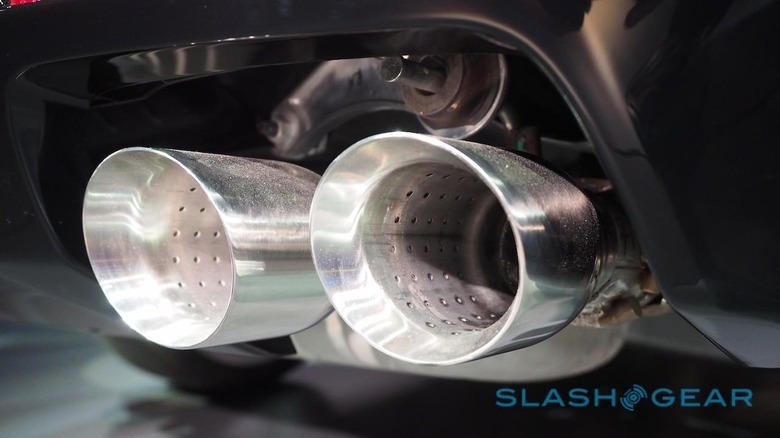
In the Camaro V6, however, the aural boost is all mechanical. Resonators help direct engine bay noise to the cabin (the V8 takes the same approach, though the 2-liter Turbo will use artificial enhancement when the Bose sound system is fitted, albeit with the optional to turn it off completely), and there's an optional dual-mode exhaust that flips open valves that bypass the mufflers during acceleration.
Whether you think that's cheating or not is somewhat academic: stand outside the new Camaro and encourage whoever is lucky enough to be at the wheel to stomp on the gas, and you're rewarded with an angry, animal howl of a sound. If you happen to be the lucky driver, you get to enjoy it inside, too.
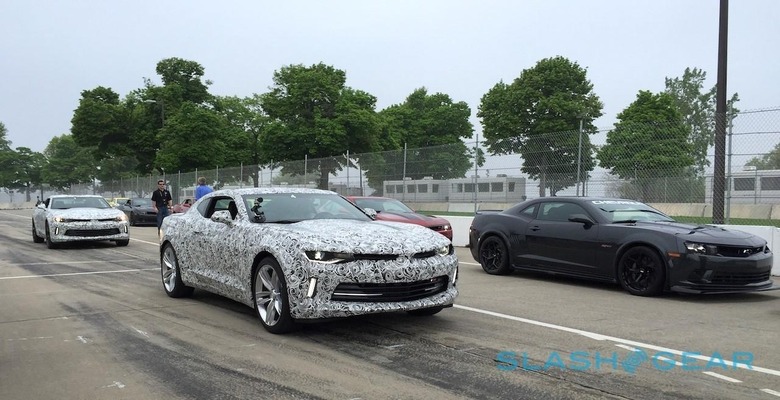
Assuming you've provoked the right degree of noise, however, the first corner is probably approaching. Where the 2015 car needed to be coaxed through the turns, however, the new Camaro feels far more in-tune with the track. The steering is direct and engaging, while there's no wallow or roll through the corners.
As a result, you can keep more speed going into each bend, and pick up more aggressively coming out of them. The only times I felt the need to shed pace more dramatically was so that I could then jab the accelerator and summon the Camaro's addictive wail.
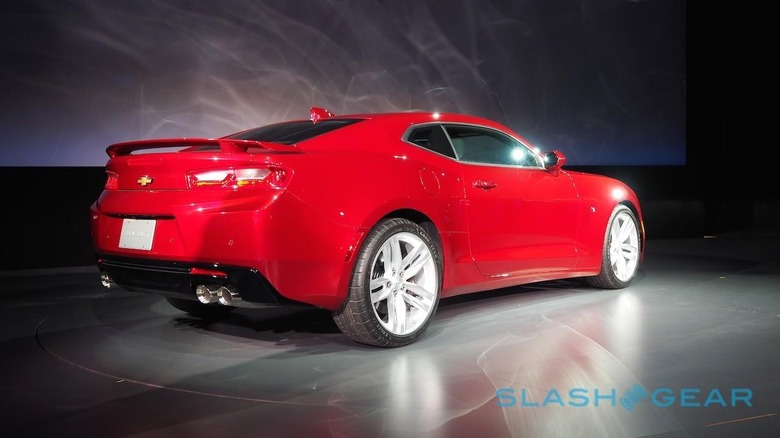
The V6 will come with a choice of two transmissions, either a 6-speed manual or an 8-speed automatic. The purist will undoubtedly opt for the former, and it's a snappy, short-throwing pleasure. Chevy opted for an electronic parking brake so as to avoid the traditional lever out of the way of the driver's arm, too, rather than the near-comically obtrusive handle in the 2015 car.
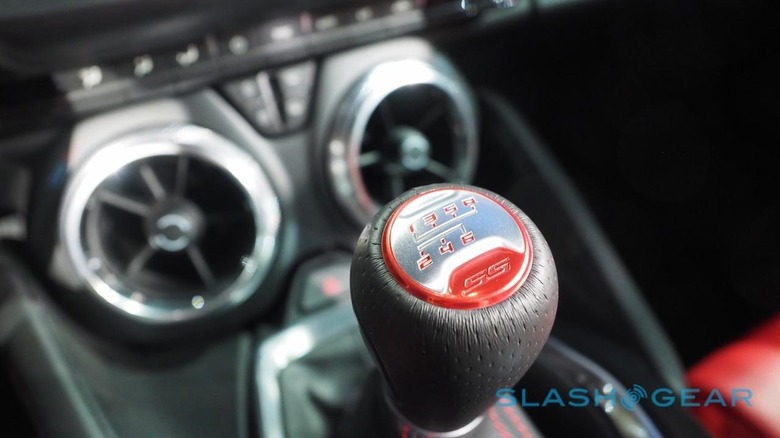
Don't count out the automatic, though. With its paddle-shifters it can be snapped through its eight gears swiftly, but even left to its own devices it proved impressive. It's not afraid to keep hold of the ratios rather than change up, which paid dividends when surging from turn to turn.
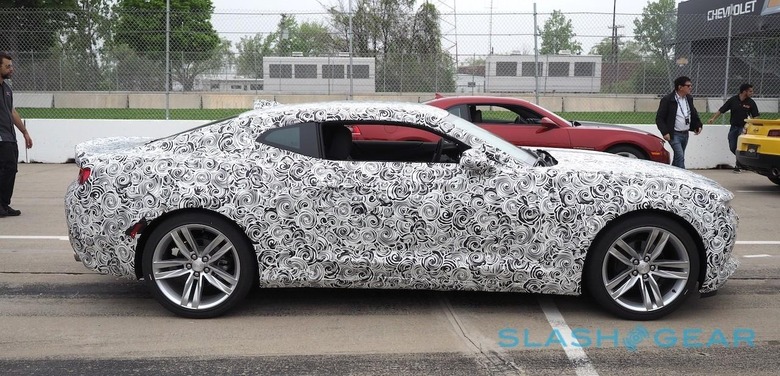
Altogether, even with just a few laps to experience it, the new Camaro felt more predictable, more accommodating than the car it replaces. A large amount of that is no doubt down to the Alpha platform Chevrolet has used, the architecture's third iteration after Cadillac's ATS and CTS.
In fact compared to the old car, despite the broad similarities in looks, only two of the badges have been carried over.
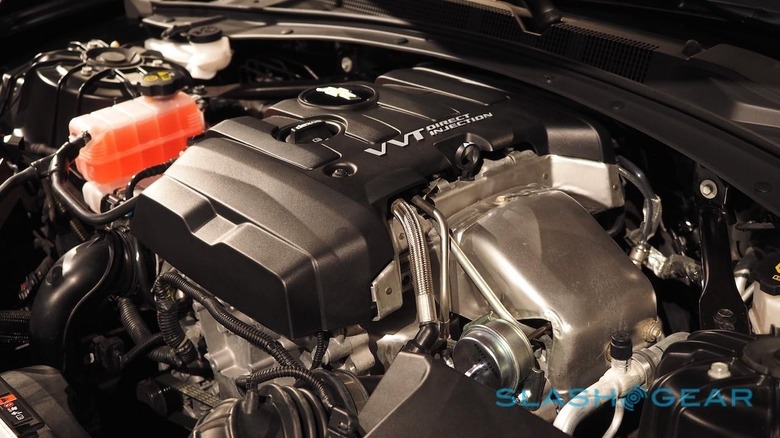
The 6.2-liter V8 at the top of the Camaro spec tree is undoubtedly what most fans of the car are wondering about. With its 455 HP and 455 lb-ft of torque, along with the aero and chassis improvements in the sixth-generation car, it should tide enthusiasts over until the inevitable even-more-potent versions arrive. Chevrolet claims the Camaro SS bests the lap times of the previous-gen Camaro 1LE, in fact.
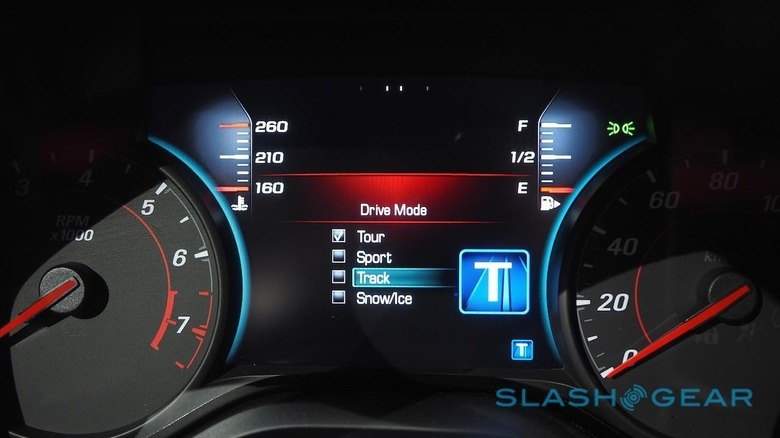
It'll also be the only car on which GM's well-esteemed Magnetic Ride Control is an option, not to mention the only version which gets the "Track" setting in the Camaro's Drive Mode Selector.
The other cars top out at "Sport", which is slightly less intense in its settings for things like throttle response, steering calibration, when the auto transmission shifts, and even what colors the LED cabin lighting switch to, if fitted.
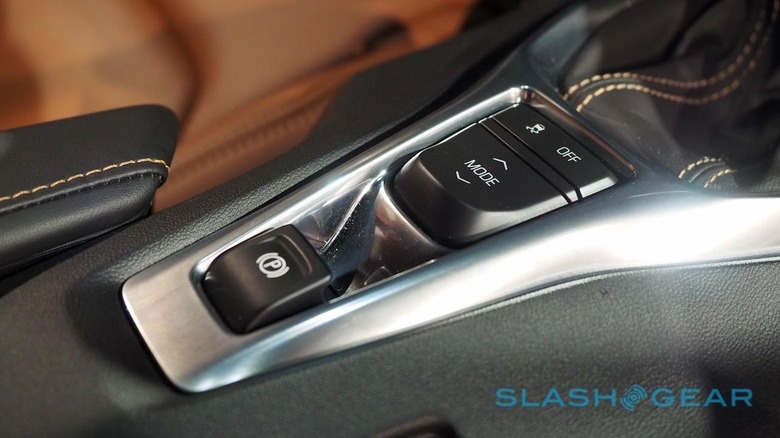
Personally, though, I'm actually more curious about the entry-level 2.0-liter Turbo. It may not have the clear charm of a naturally-aspirated engine, but it's arguably where the really intriguing competition between Chevrolet and Ford takes place.
Ford's entry-level Mustang is the V6, while the EcoBoost turbo is the mid-tier engine. The 2016 Camaro flips that around, kicking off with the turbo and making the V6 the mid-tier.
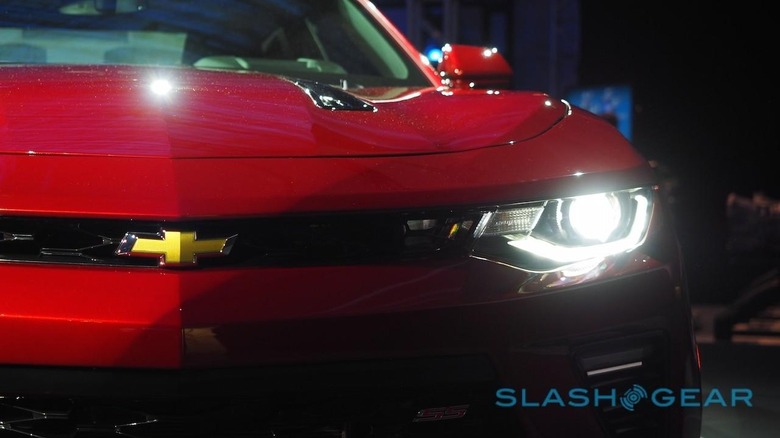
It's a decision Reuss says makes for a "more logical progression in engine displacement," and you can certainly see how the 4-6-8 cylinder path would be easier to grasp in showrooms.
Meanwhile, the Camaro's 2-liter turbo actually has more torque than the V6 Mustang, though it's worth noting that Ford's 2.3-liter EcoBoost has more torque than Chevy's V6. I'm fully expecting the relative virtues of each powertrain to be the hot topic of argument between warring Mustang and Camaro fans.
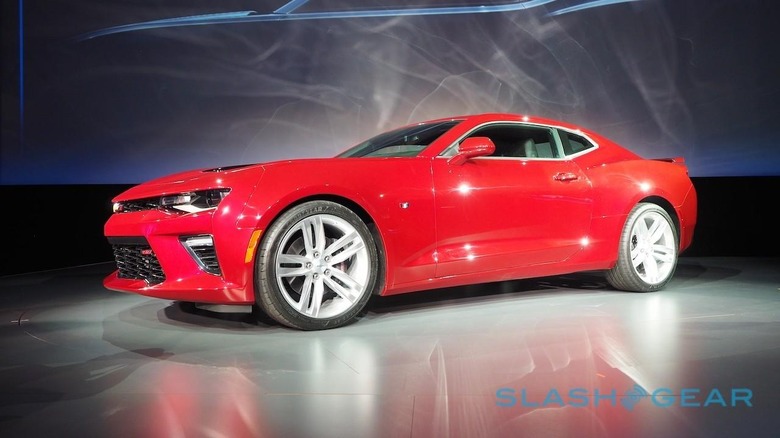
Some of the old challenges of the car persist, certainly. Biggest of those is visibility: Chevrolet made the rear three-quarter glass a little more open, but opted to keep the slit-like windows and windshield in the name of aesthetics. You actually sit slightly lower, too, with the seats dropped an inch.
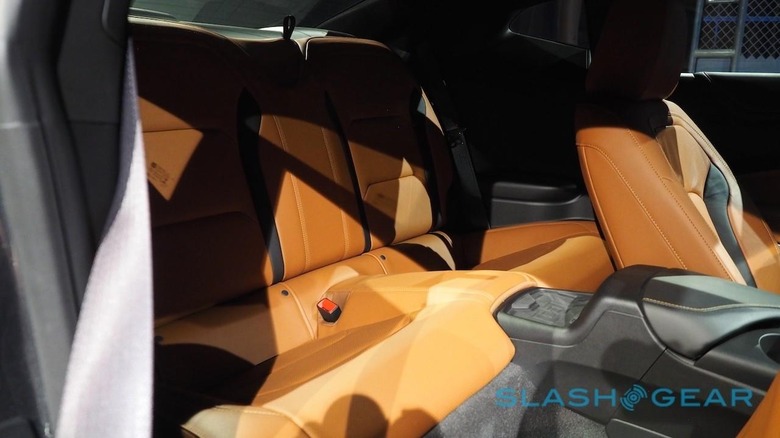
Staying inside, there's good news and bad. The latter is that rear space is even more claustrophobic than before, because of the car's slightly smaller dimensions. At 5'8 I was already hunched when perched on the rear bench, and getting in and out – even with the electric seats motored as far forward as they'd slide – was decidedly graceless.
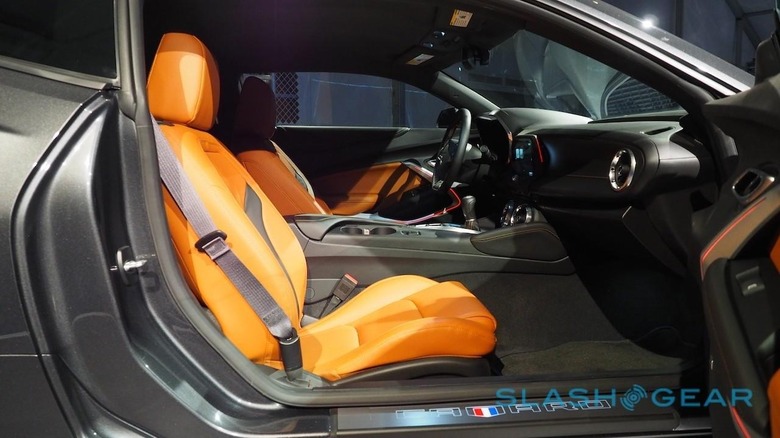
Space for children, then, or pets, or luggage (should you have filled the surprisingly deep trunk), or friends you don't particularly like. It feels a minor complaint when the rest of the cabin has been so hugely improved over the outgoing Camaro.
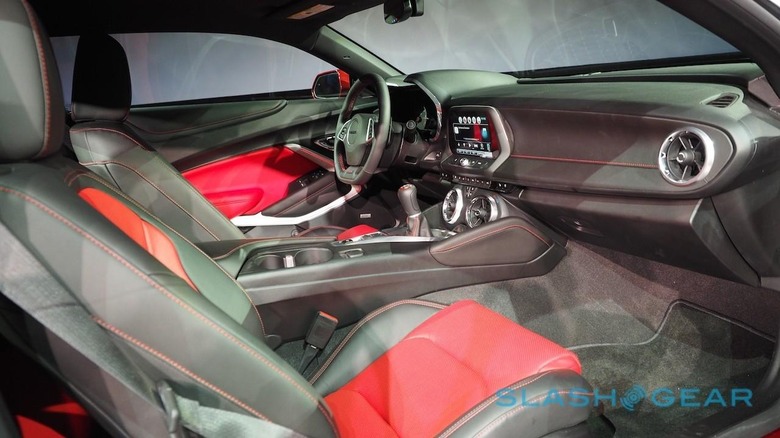
There's a noticeable step up in quality, all across the board from the leather through the plastics and the feel of the switchgear. The driver instrument binnacle – topped with its double-pronged cowl, in-between which lurks the projection unit for the useful but optional color head-up display – now sandwiches a broad LCD between analog speed and tachometer dials.
That central screen has three overall styles, including mimicking the four analog mini-gages of the old Camaro, and then dozens of customizations, paged through with controls on the compact, chunky-rimmed and flat-bottomed wheel.
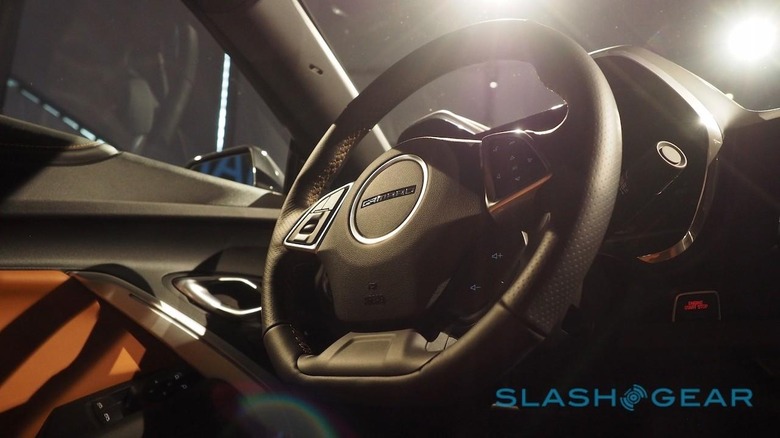
A touchscreen in the center stack, measuring in at 8-inches if you spec the navigation package, uses Chevrolet's MyLink infotainment system. If you wirelessly pair your smartphone you can stream Pandora and run other apps through it; a wireless charging plate can optionally be added to the center console, though it's an ergonomic oddity being set right back, almost more convenient for those in the rear than the front seat occupants.
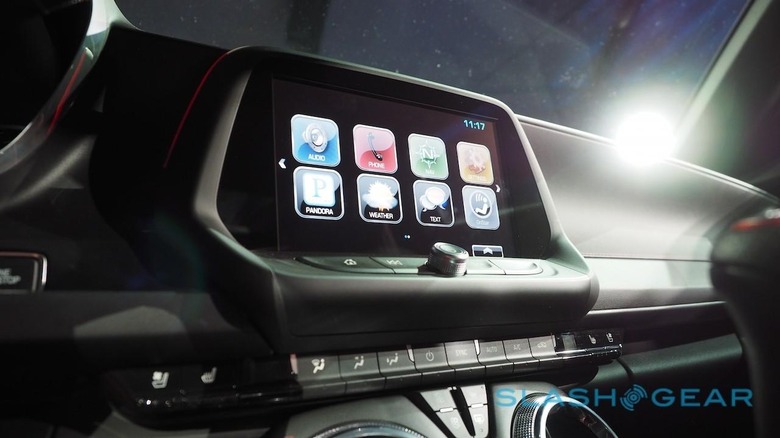
Underlining the central touchscreen is a row of buttons for controlling the heated and ventilated seats, along with most of the HVAC functions. Interestingly, Chevrolet integrated the temperature and fan controls into the knurled rings around the circular vents themselves, figuring it would both save on dashboard space and be easier to reach out and twiddle while driving.
It reminded me a little of Audi's similar approach on the TT, though without the German car's circular OLED screens embedded in the center of each nozzle.
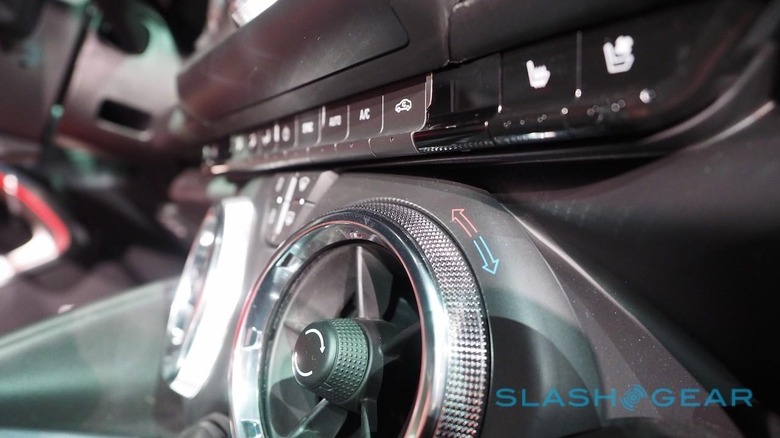
Another option on the Camaro's order form is customizable ambient lighting. LED strips in the door trim, dashboard and center console, and even in the cupholders can be set to 24 different effects, including a show mode that cycles through multiple colors at random.
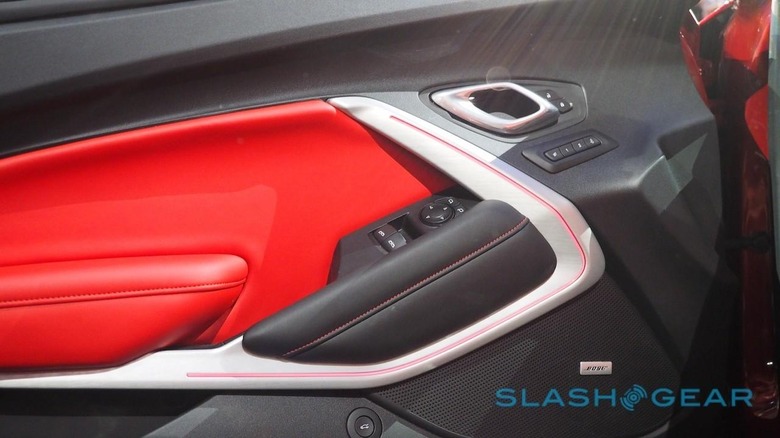
It should be gimmicky, but this hue-for-your-Chevy is actually surprisingly tasteful. It's also put to good use with the Drive Mode Selector, the lighting changing according to whether you have the car in Snow/ice, Tour, Sport, or Track mode.
Exactly how much all this will cost when the 2016 Camaro goes on sale later this year has not been confirmed. Chevrolet will announce final pricing closer to launch, but we're told to expect something in the ballpark of the outgoing car, which would suggest a roughly $23k starting price for the 2.0-liter Turbo.
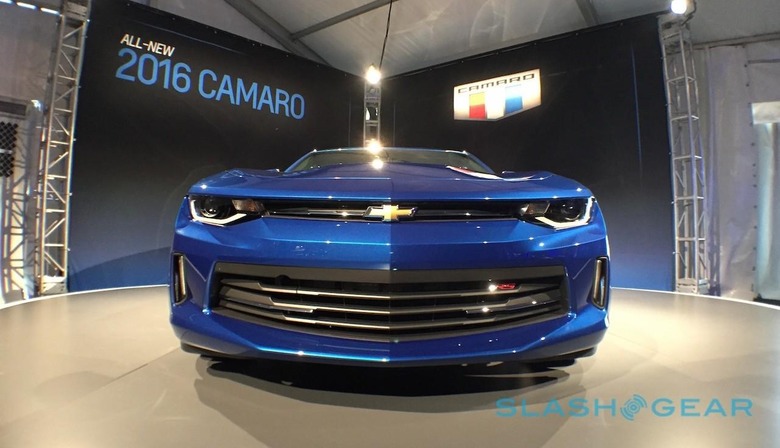
It looks like you'll get a lot for your money, too. Rather than simply throw bigger, more powerful engines at a car that had already outsold its key rival for the past five years, Chevrolet took the time to cut the fat and ended up with something more ambitious and that promises to be even more rewarding.
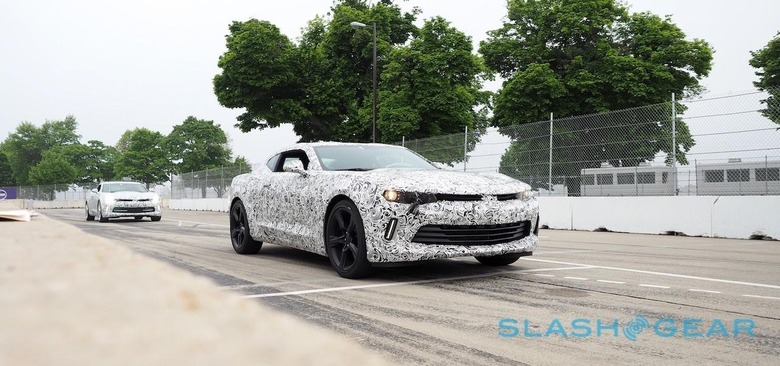
Competition with the Mustang will undoubtedly be fierce, but I couldn't help but be charmed, even by just a pre-production engineering version of the new Camaro. I'm looking forward even more to seeing if the production car – and the other engine options – live up to these first impressions.

